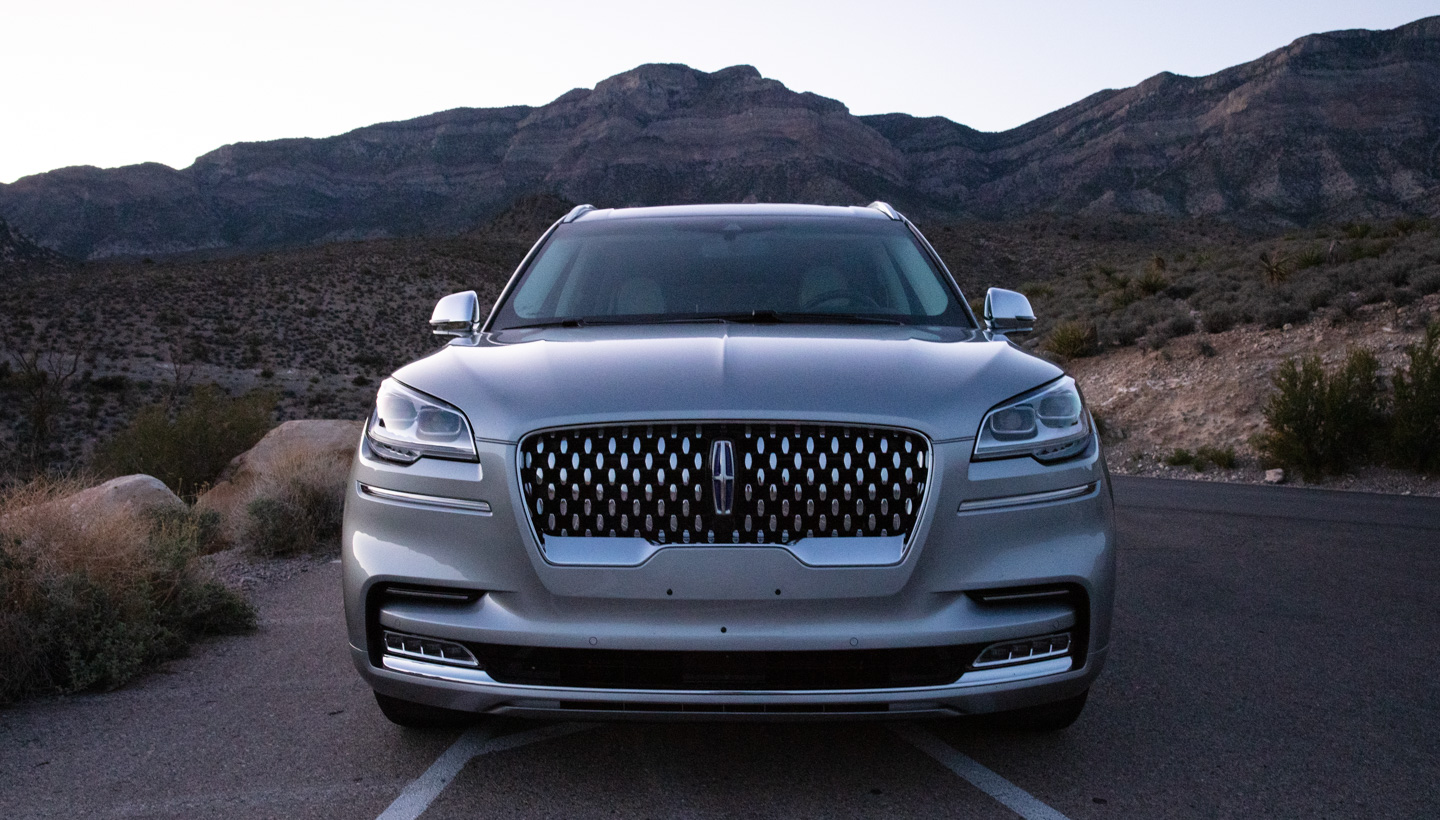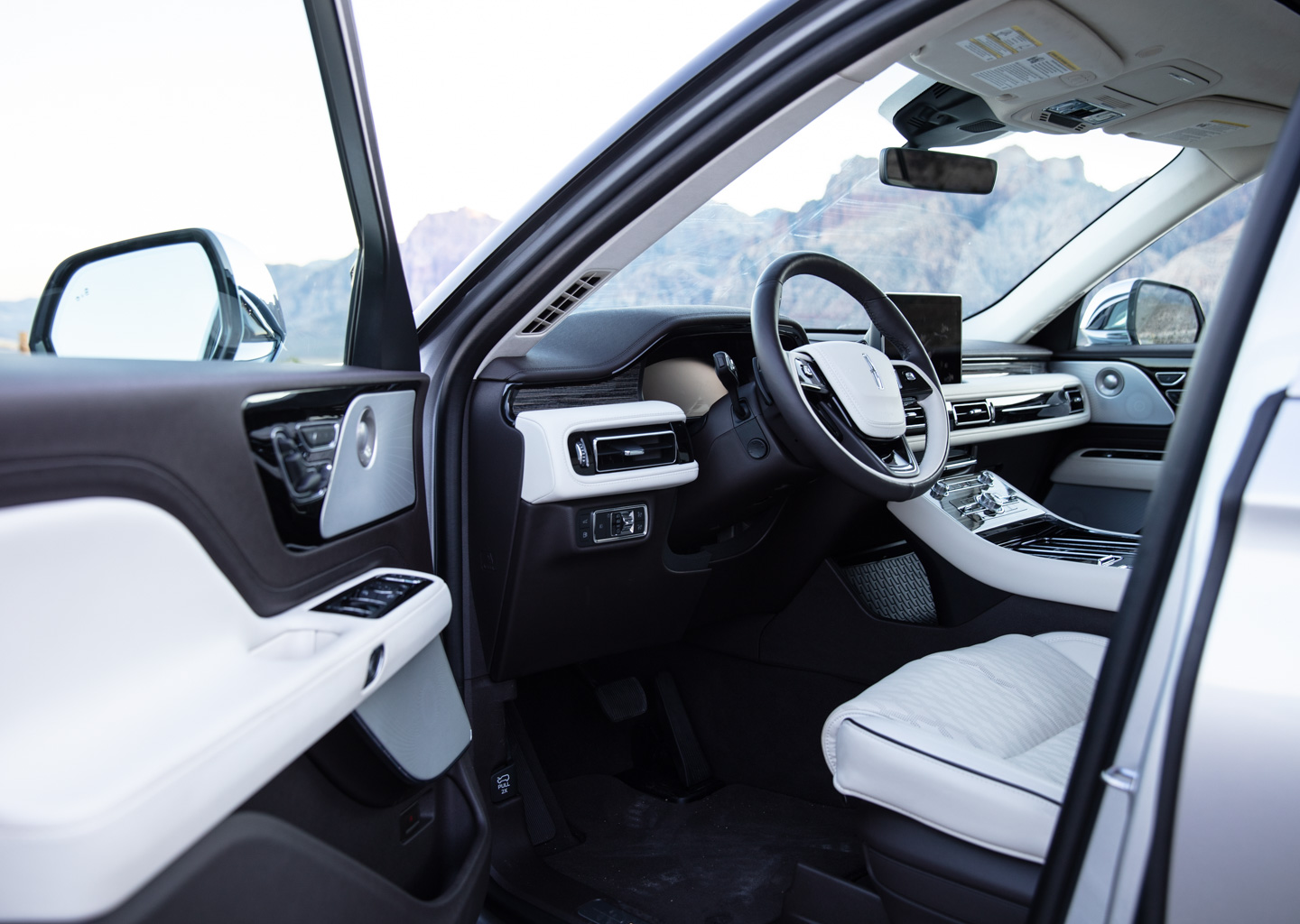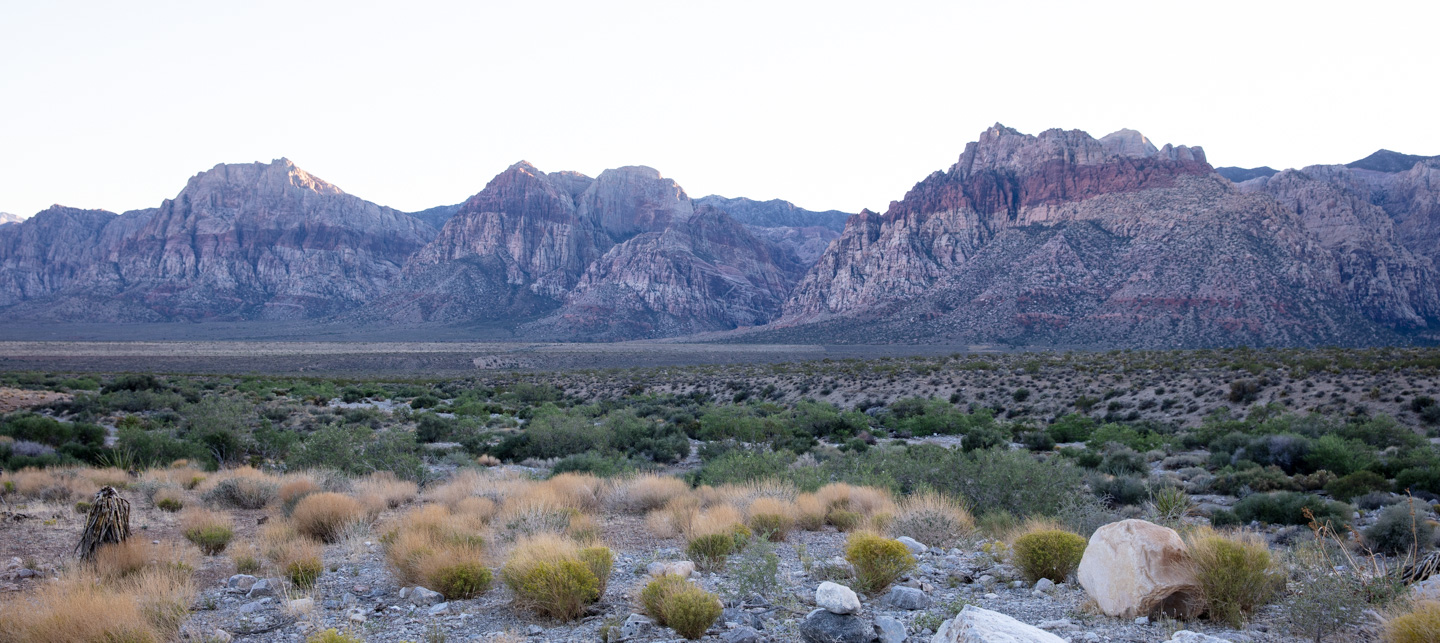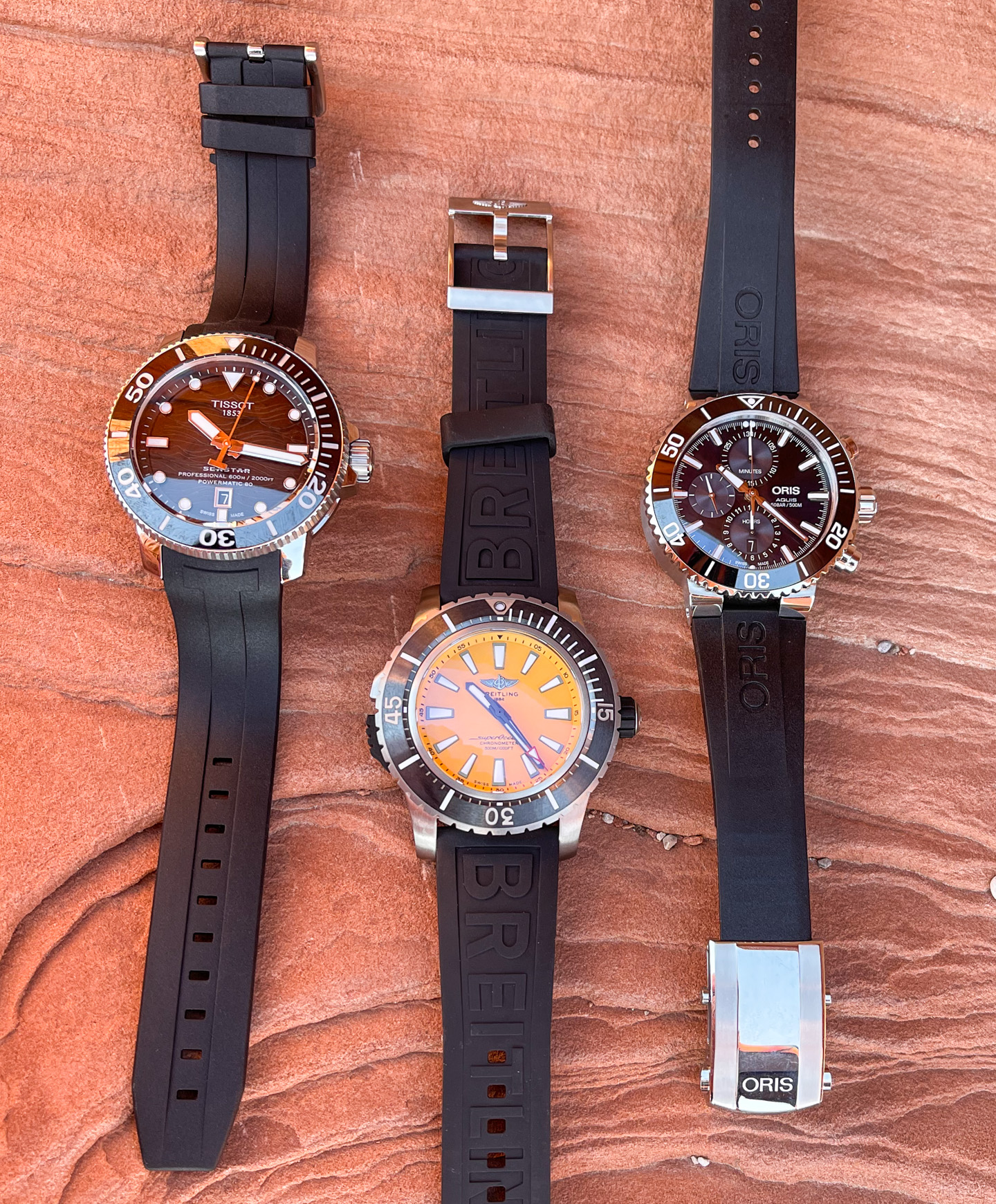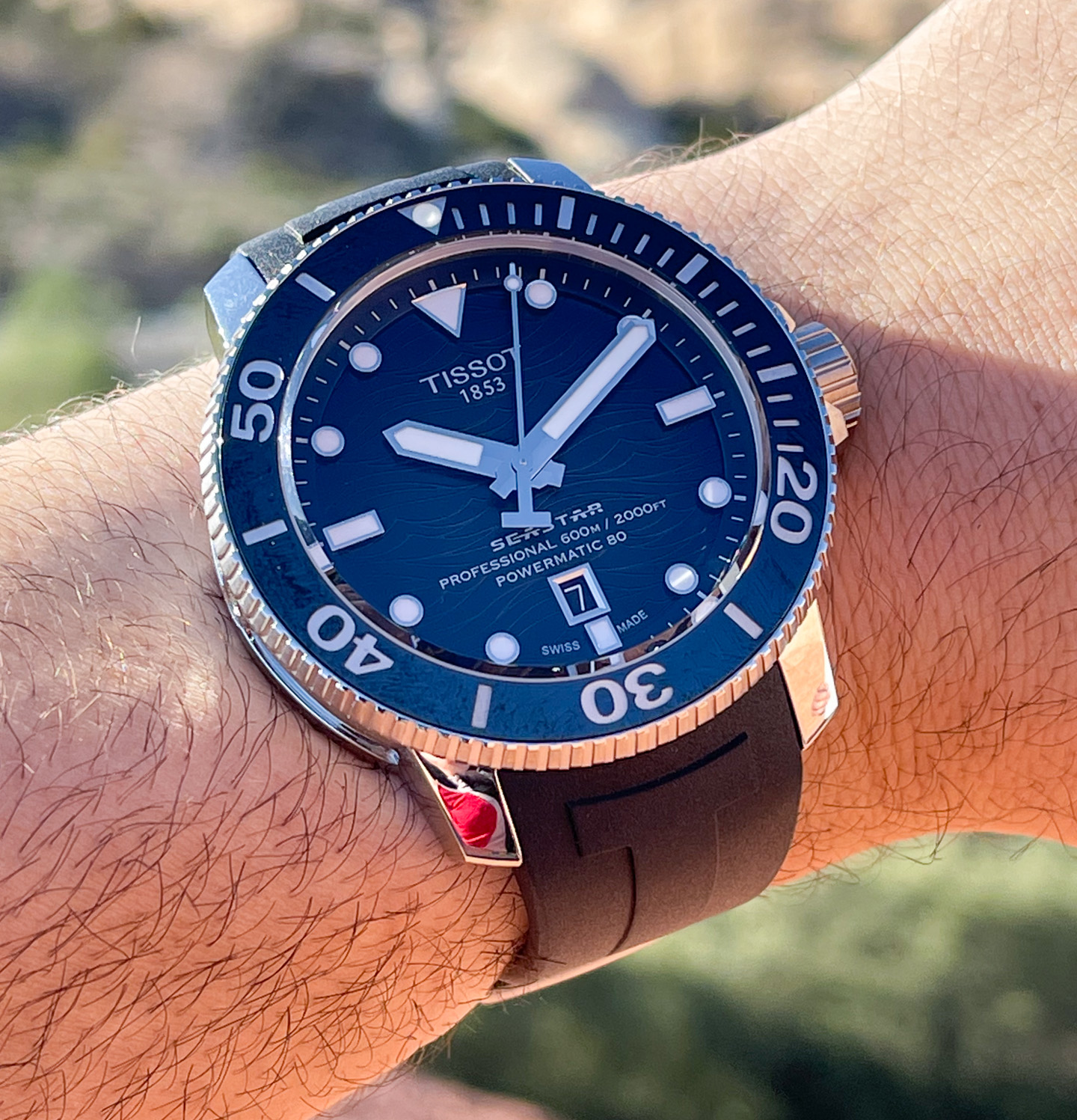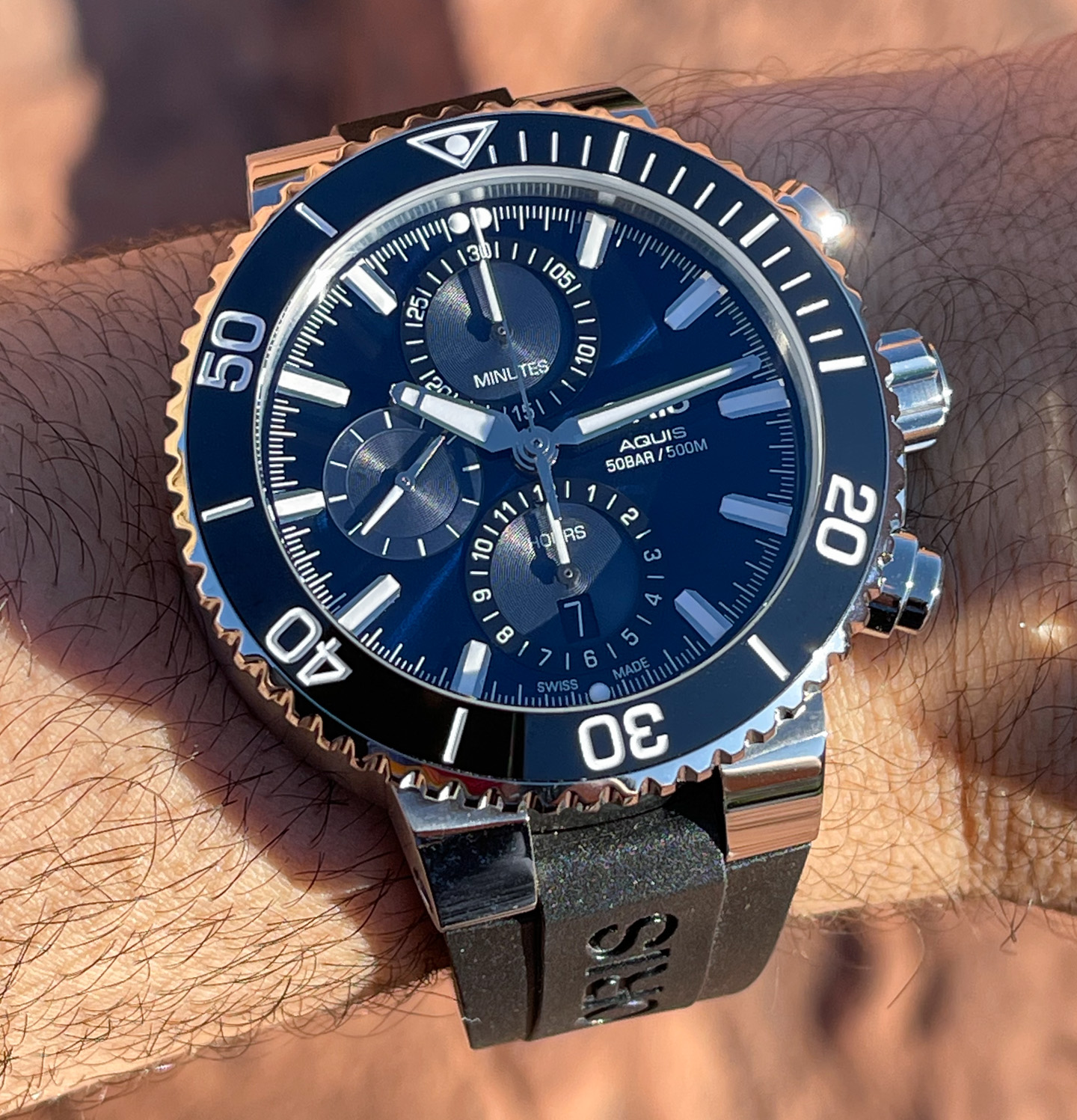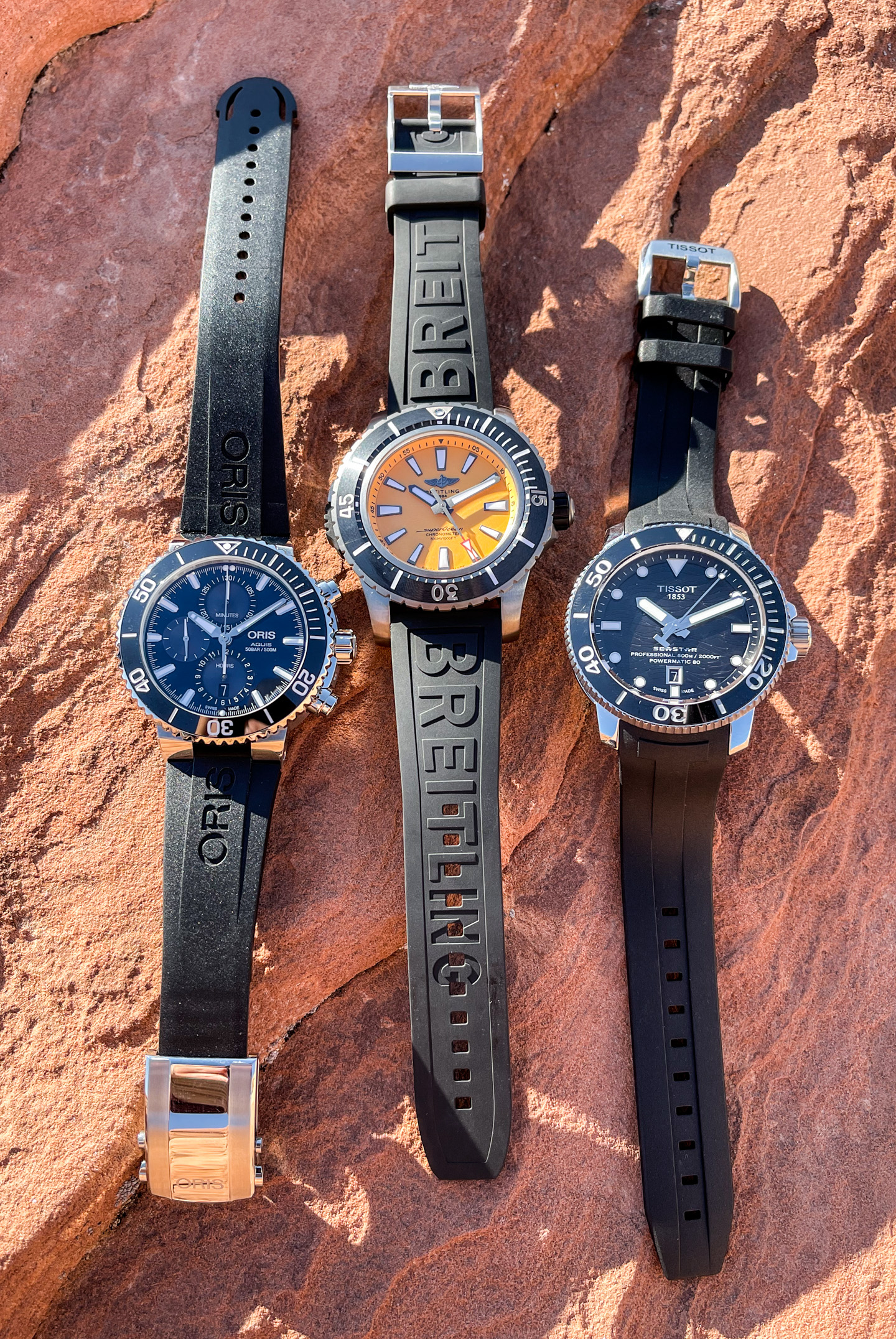
When I first explained my idea of doing an article about dive watches in the desert, a common initial response from the aBlogtoWatch editorial team was, “Where are you going to go diving in the desert?” Chuckling, I responded that actual diving wasn’t the point. Rather, it would be a discussion into how effective the world’s favorite sport watches (diving-style) are at being useful wrist tools in extremely warm weather. Finally, the opportunity for a nice drive into the heart of our warming planet presented itself, and I made my way to the famed Red Rock Canyon National Park outside of Las Vegas, Nevada. Armed with three popular diver’s-style timepieces with me, here is what I learned about dive watches in the desert.
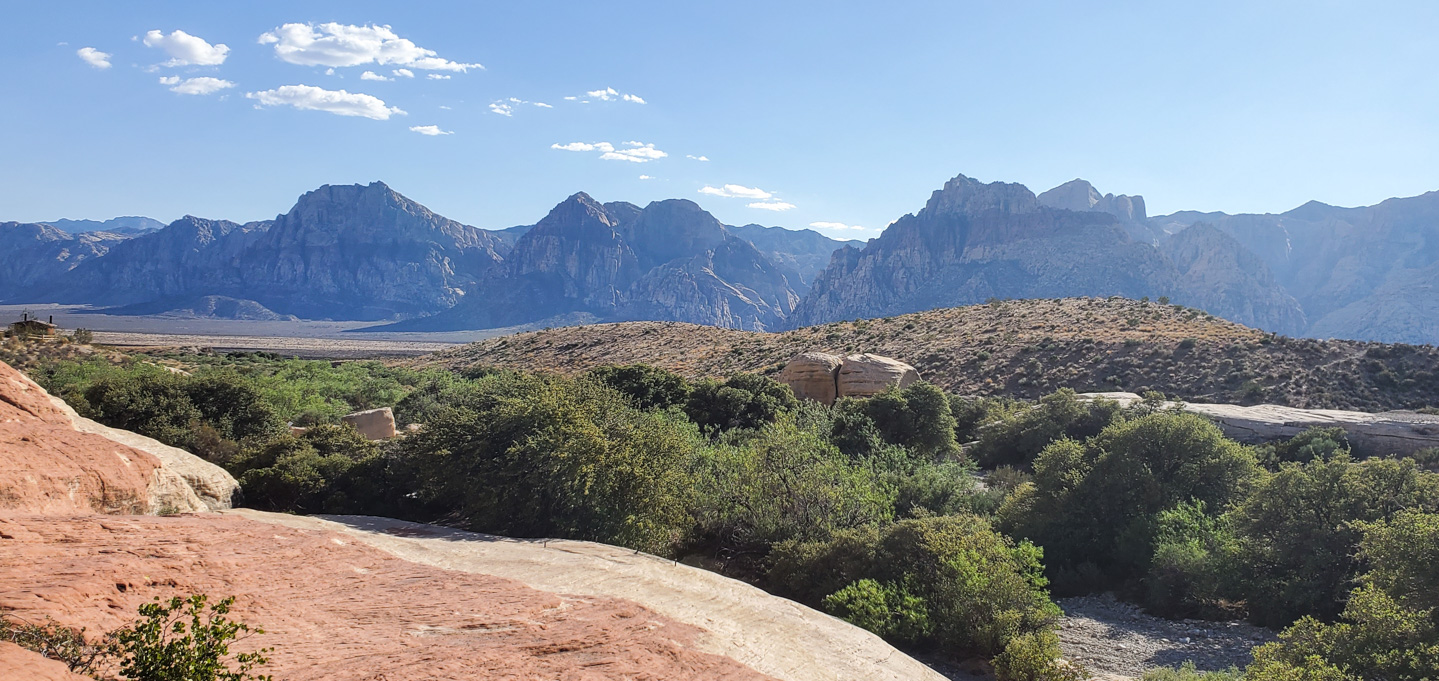
The Practical Considerations For Desert-Worn Watches
First, a few important assumptions and notions so that the reader can understand why taking dive watches into the desert is even an interesting intellectual exercise (aside from being fun), to begin with. In short, there really aren’t many tool watches with a hot-weather survival theme. One can go out and buy diver’s watches, pilot’s watches, driving watches, boating watches, etc… There isn’t much of an established category of timepiece product for those seeking utility in a hot-weather, expansive outdoor environment. More so, with the world is getting warmer (or perhaps I’ve been sensitive to it with all the hiking in the sun I’ve done over the last few years), more and more people who like watches may need to adapt their wristwatch wearing strategy.
Hot weather and the lifestyle associated with it has special considerations for wristwatches mostly for comfort purposes. I also want to point out a distinction between tropical heat and desert heat since differences in humidity can make a big difference. Tropical climates are typically much more humid, while desert environments tend to be sometimes brighter and also a lot drier. Thus, while jungle or desert exploration might have similarities, a bright and dry environment is not the same as a wet and more dense environment. That doesn’t necessarily mean the same watch won’t perform with excellence in a hot dry or wet environment, but rather that each climate has its own special things to think about.
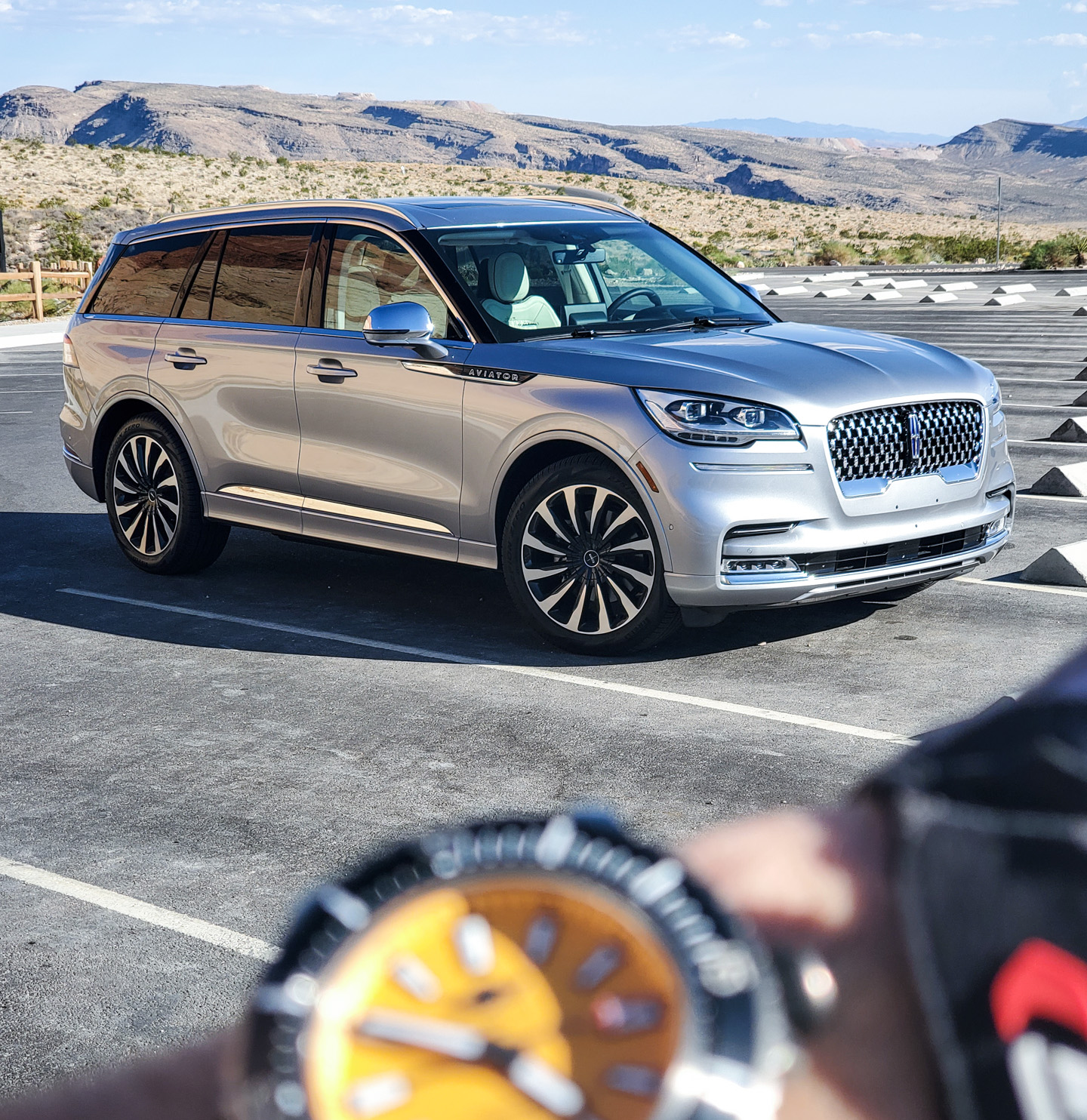
When evaluating a wristwatch in the desert, there are three main things that come to mind for me: comfort, legibility, and environmental resistance. Let’s discuss comfort first. Desert watches need to fit securely and not wobble around with the motion of your arm. That means the right strap material, as well as one that handles sweat correctly. In humid environments, moisture is the biggest problem since sweat is far worse an issue — as are things like dials fogging up when and if water enters the case. Leather straps and water do not mix well since sweat or moisture will not only cause natural leather to feel uncomfortable against your skin, but it will make the strap stink and deteriorate over time.
In the desert, water is less of an issue, but if you are moving you, will be sweating, and you probably don’t want your watch to be uncomfortable — reducing annoyances is a major part of a happy hike. Metal bracelets can be useful, but there is a range of reasons you might want to avoid a metal bracelet over my desert preference, which is a rubber strap. Wrists tend to expand in size when it’s warmer (making sized bracelets a challenge). Metal bracelets can also absorb large amounts of heat, which means they can even grow quite hot to the touch if exposed to the sun for long enough. NATO-style straps made out of nylon are also a good option, but in my opinion, they are not as ideal as rubber or silicone straps because nylon can get slippery when wet or sweaty. Thus, for the purposes of this trio of dive watches in the desert, I opted for those on rubber or rubber-style straps.
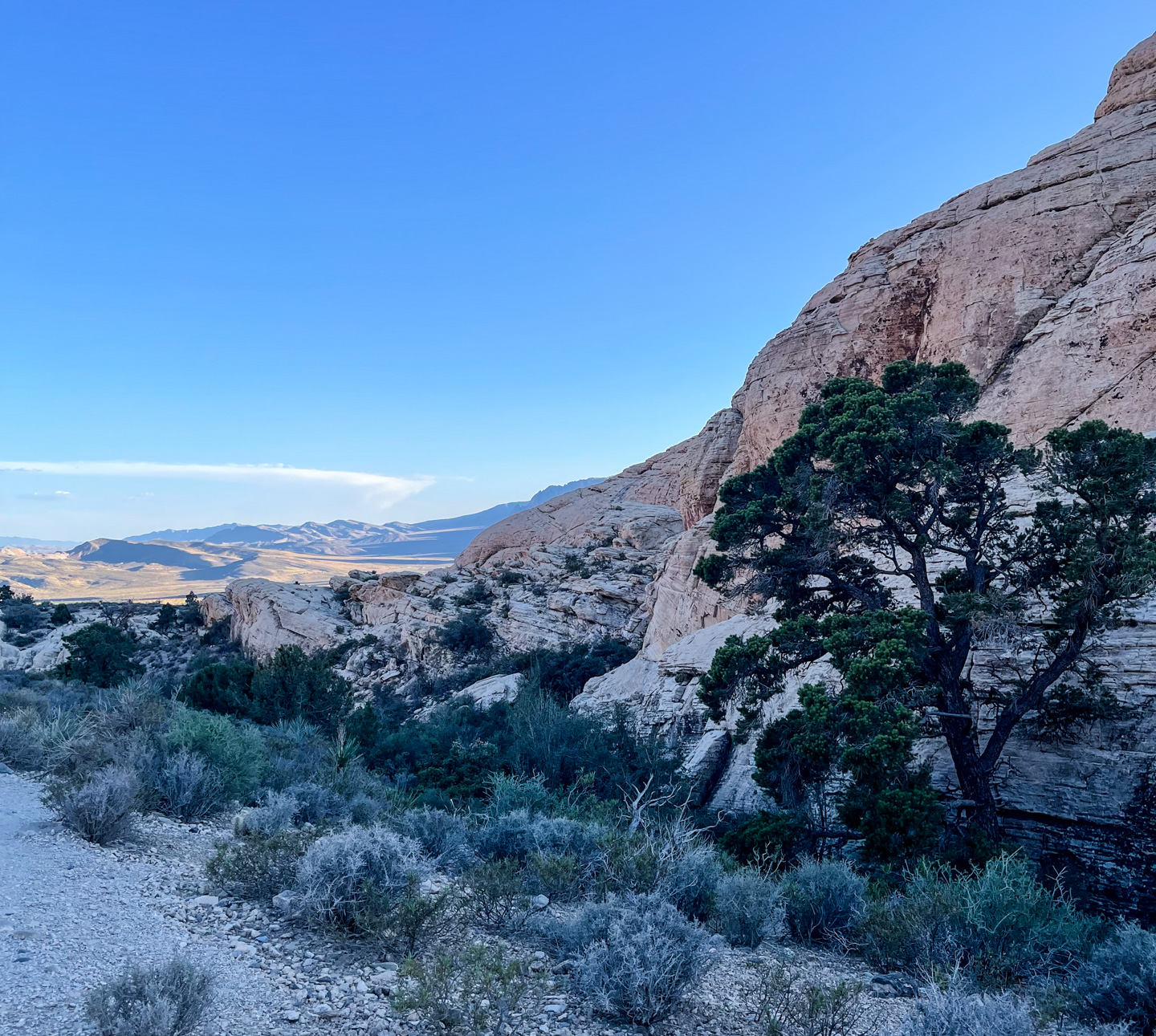
Legibility issues in the desert are different from those underwater. Whereas a diver’s watch needs to contend with low light and murky environments, the desert tends to have an overwhelming amount of light. That said, the desert after dark is a very dim place. So, if your trek lasts until after sunset, you want a watch with lasting luminant — typically what dive watches are already good at. I also know that watches designed for really bright environments tend to have lighter-color dials (with darker hour markers and hands), as well more matte surfaces so that there is less reflected light, which can blur legibility. The watches I chose have different dial colors and different textures, so it was interesting to see how they each individually fared in the direct sun.
Deserts also tend to be notoriously rough places, and you don’t want your watch to be damaged (or be damaging to you) while worn. That makes sense when you think about the fact that deserts are mostly rocks, which scratch watches, and sunlight — which can heat up watches or damage internal components. There is also the matter of often ubiquitous dust to deal with — another element that is kept out of watches by the same seals and gaskets that are meant to keep out water.
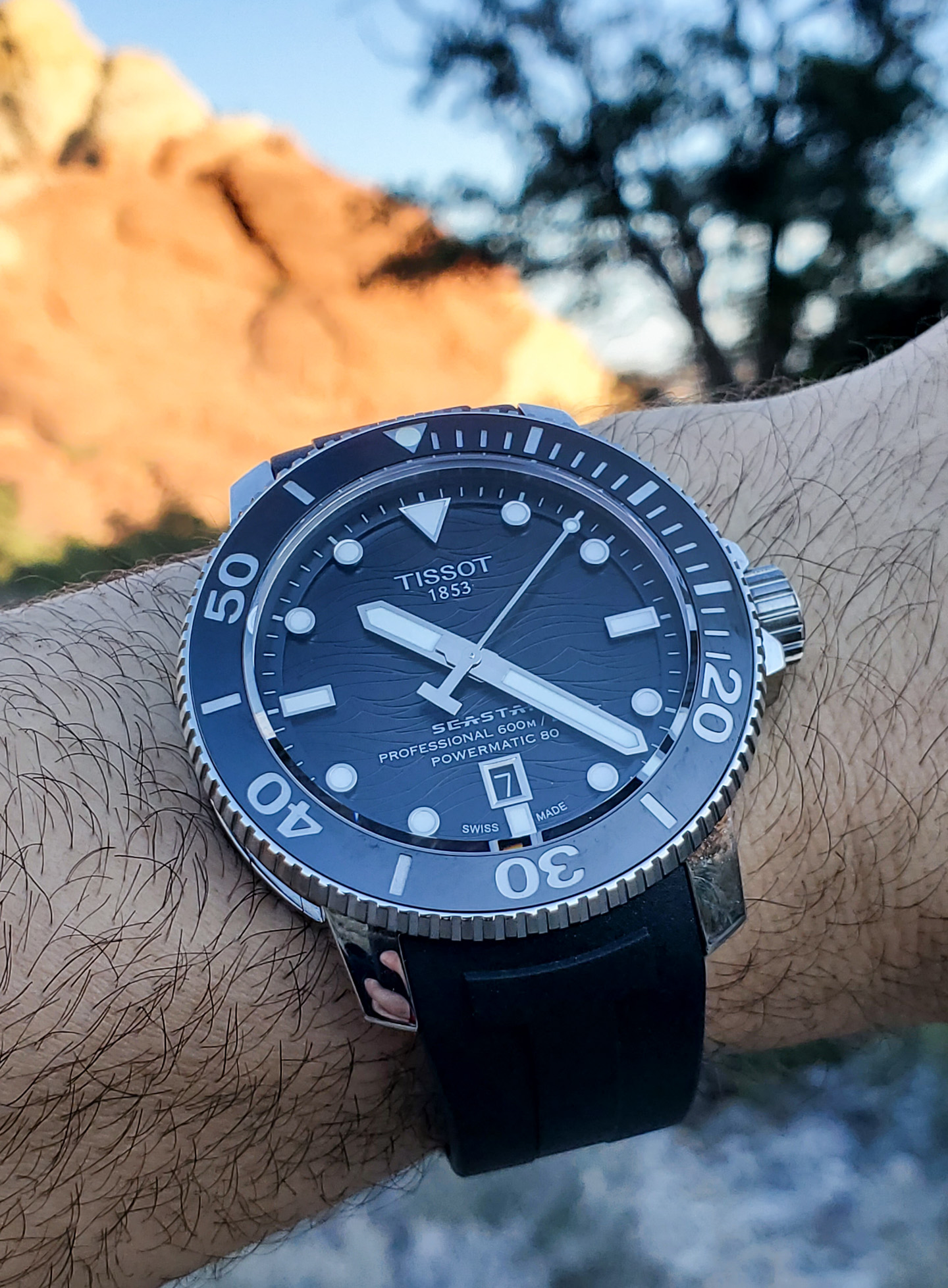
Each of these three watches is also an automatic mechanical. I’ve heard of stories in which some digital watches have been totally destroyed when being left out in the direct sun for too long. There is no clear answer as to whether a mechanical or electronic watch is ultimately better in the desert, but I think there is a stronger case for a mechanical watch. Out there, you are more likely to be away from civilization and might have a hard time finding things like spare batteries for a quartz watch. In the open, you also have the sun, so if your mechanical watch was off, you could feasibly test it against the sun (with say, a sundial) and adjust it. As I said above, I know that certain electronic components simply won’t work or work reliably at high temperatures. I’m not saying that all balance springs are immune from beating heated up, but I’d be wary about leaving all but the most sophisticated G-Shocks out in the desert sun for a few hours.
One grand idea is to wear long sleeves should your watch prove too delicate in the sun. Then again, we are talking summer wardrobes and sleeves might be too much. A few timepiece enthusiasts might even want to promote wearing their dive watches in the desert. Long exposure to UV rays is what caused the discoloration in now-vintage sports watches that have “patinaed” elements such as “tropical dials.” So, in some cases, the damaging effects of the sun are valued for their trendy artistic and fashion value.
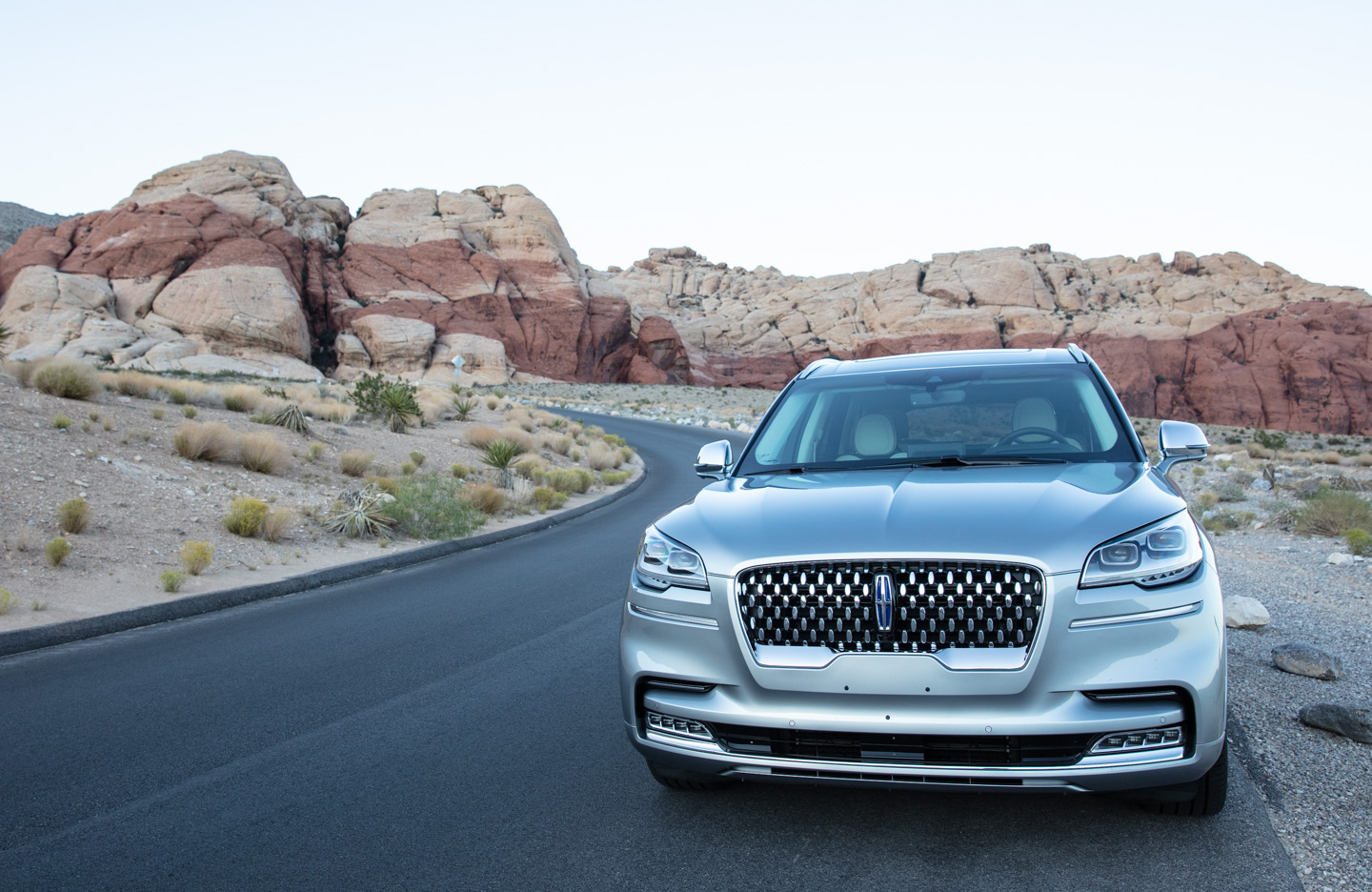
If you are climbing rocks or prone to falling, you might want to consider the scratch resistance of the case materials on your watch prior to venturing out into our planet’s jagged plains. Steel is going to be a good mixture of durability and aesthetics. Titanium handles heat a bit better I believe while darker colors and coatings can have the tendency to absorb heat thus becoming hotter to the touch. Polished surfaces are innocent enough but not something to particularly seek out since the surfaces will reflect back a lot of light causing potentially annoying glare. An ideal design solution for a desert watch case material is probably a matte-finished light color that can handle a lot of nicks and scrapes.
I will again mention heat because I think it is a real issue when it comes to wristwatches worn in the desert. Up to 100 degrees or so, this might not be an issue (unless your timepiece is kept in direct sunlight), but as it gets warmer and brighter, a steel or metal watch hit by the sun’s rays will begin to heat up. While it hasn’t yet happened to me, I can easily see someone being burned by a heated chunk of metal on their wrist warmed up over the course of a few hours. Most important however is wearing comfortable over prolonged periods where sweat and dust could be trapped between the watch case and your wrist.
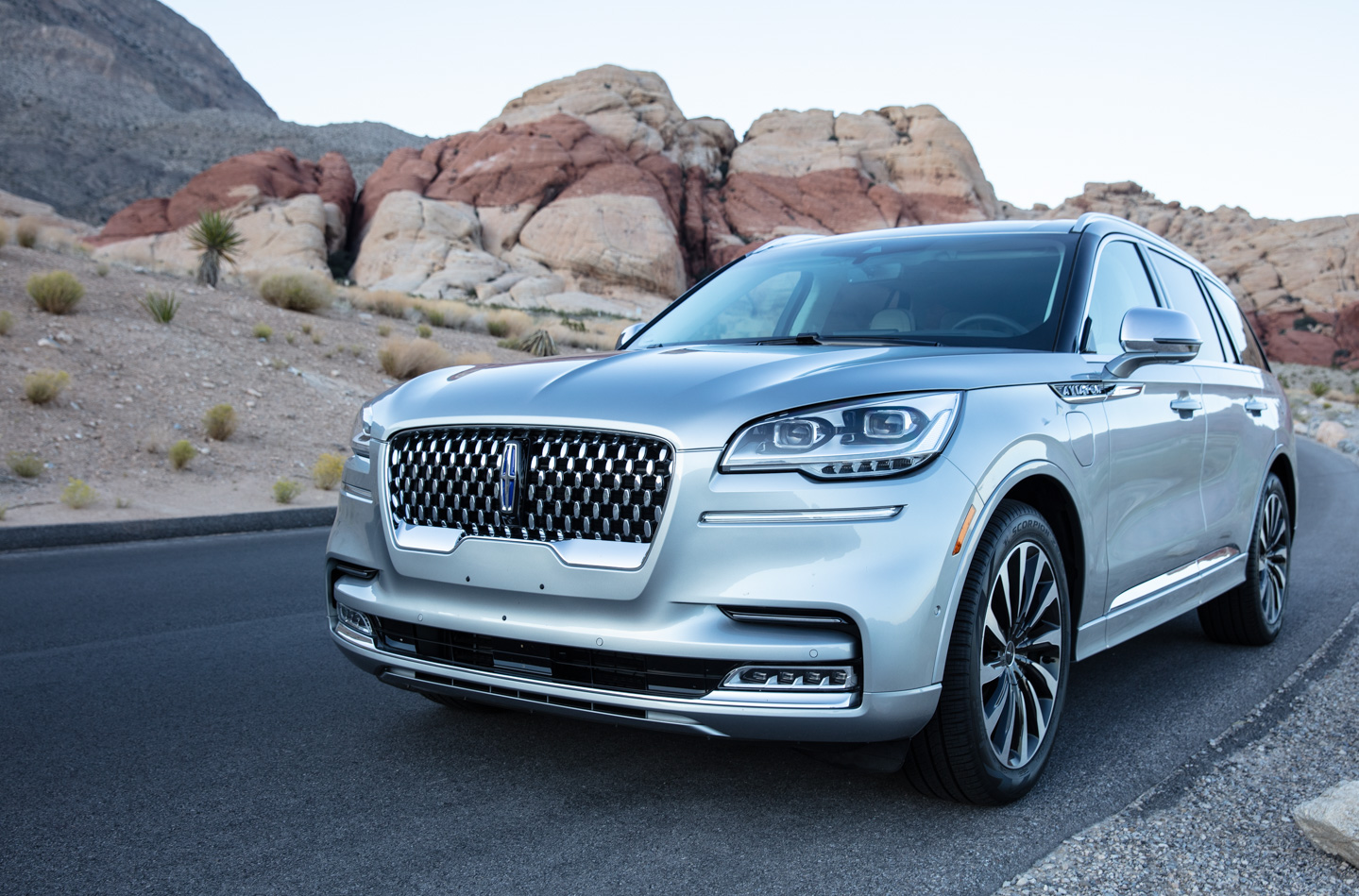
Ride To The Venue: Lincoln Aviator Twin Turbo V6 Plug-In Hybrid Driven To Red Rock Canyon National Park
Most of my desert trekking happens in California, where I live, but for the purposes of this article, I wanted to go somewhere different, given my propensity to explore. I drove from Los Angeles to Las Vegas and decided to check out a classic Nevada desert destination, the famed Red Rock Canyon National Park. While there are bleaker, more desolate desert landscapes in the area, I decided I would opt for some mountains and natural beauty. The abundance of chaparral-style shrubs made the area feel more like Southern California, save for the peculiar rock formations and famous geologic hues. It only takes about 30 minutes to drive to the canyon from the popular parts of Las Vegas, and yet Red Rock Canyon National park benefits from feeling as though it is in one of America’s many charming open and undeveloped landscapes. It costs about $15 to drive in, and that comes with well-maintained park roads and parking spots.
Deposits of minerals such as copper and iron in the rock oxidize to a robust red color, making for interesting veins in the formerly flowing rocks which are mostly sandstone (and fun to climb). The temperature in the area varies during the year but was nearly 110 degrees in late August 2021 (in the winter it can get extremely cold at night). It can reach 120 degrees at times. I’m seasoned at being outside in very hot (albeit dry climates), but it is advisable to wear as much sun protection as possible.
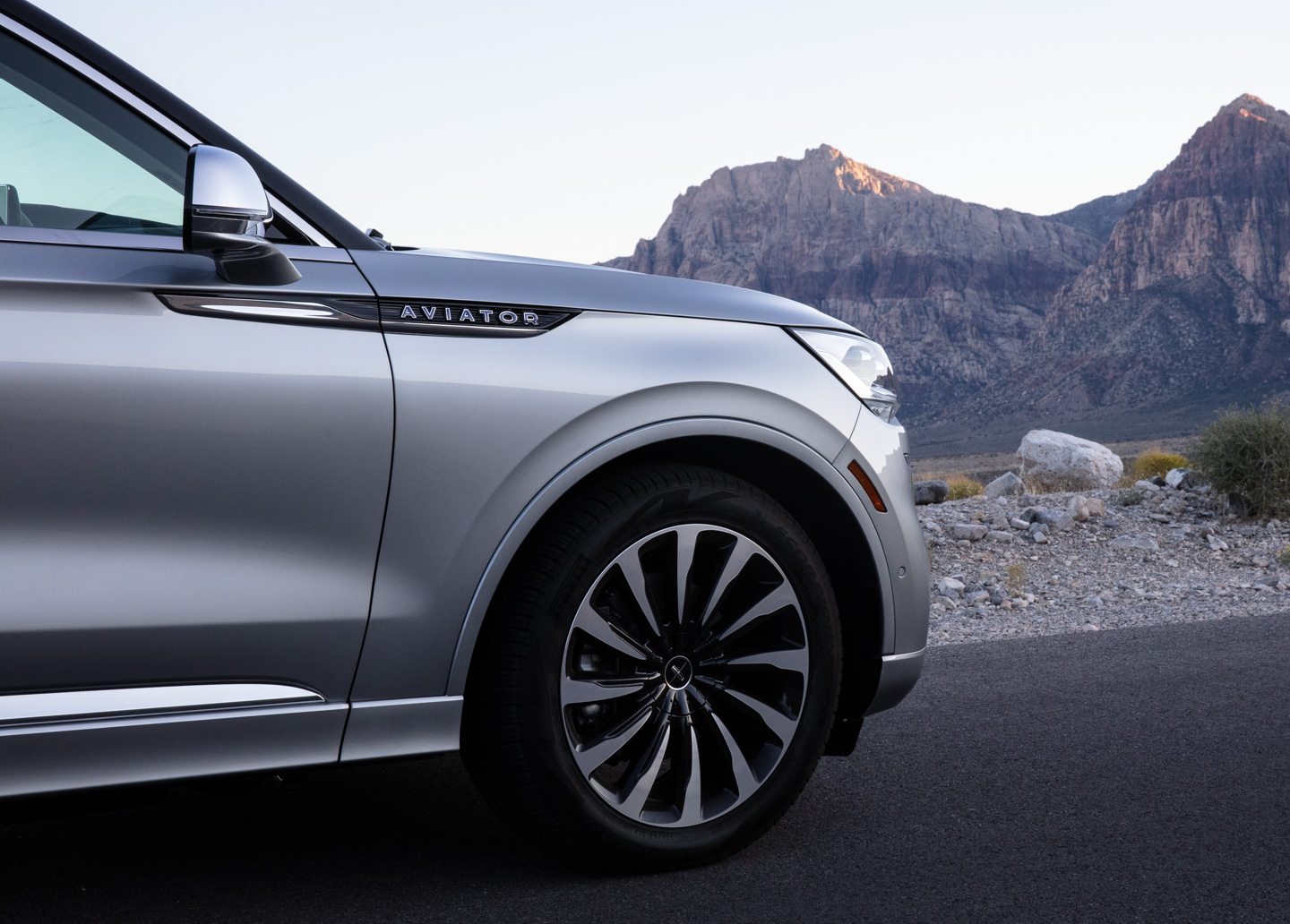
A wristwatch can be an extremely useful tool in the sun to help limit sun exposure because it can do damage to your skin even if you don’t feel it. Depending on what you are wearing and where you are traveling, it can be a good idea to take a break in the shade each 15 to 20 minutes if you find yourself exerting yourself in direct light. The rotating bezel on a diver’s watch is a handy means to time such intervals – helping to remind you when to retreat from direct sunlight or to drink water.
The national park has a famed scenic driving road so it was fortunate that I drove to Red Rock Canyon in Lincoln’s most sophisticated automobile yet (it certainly feels like it), the 2022 Lincoln Aviator. The American luxury car maker lent us a high-spec version of the Aviator to accompany aBlogtoWatch on this journey and I’m glad I got to know this cargo-capable cruiser. The Aviator is a seven-passenger SUV-style automobile that has an optional electric/gas hybrid engine that is the cherry on top of an otherwise very sophisticated package. The more than decent twin-turbo 3.0-liter V6 engine gets over 50 miles per gallon thanks to this hybrid system, and the Aviator can even be driven mostly using battery power for short intervals if you plug in the car to charge it.
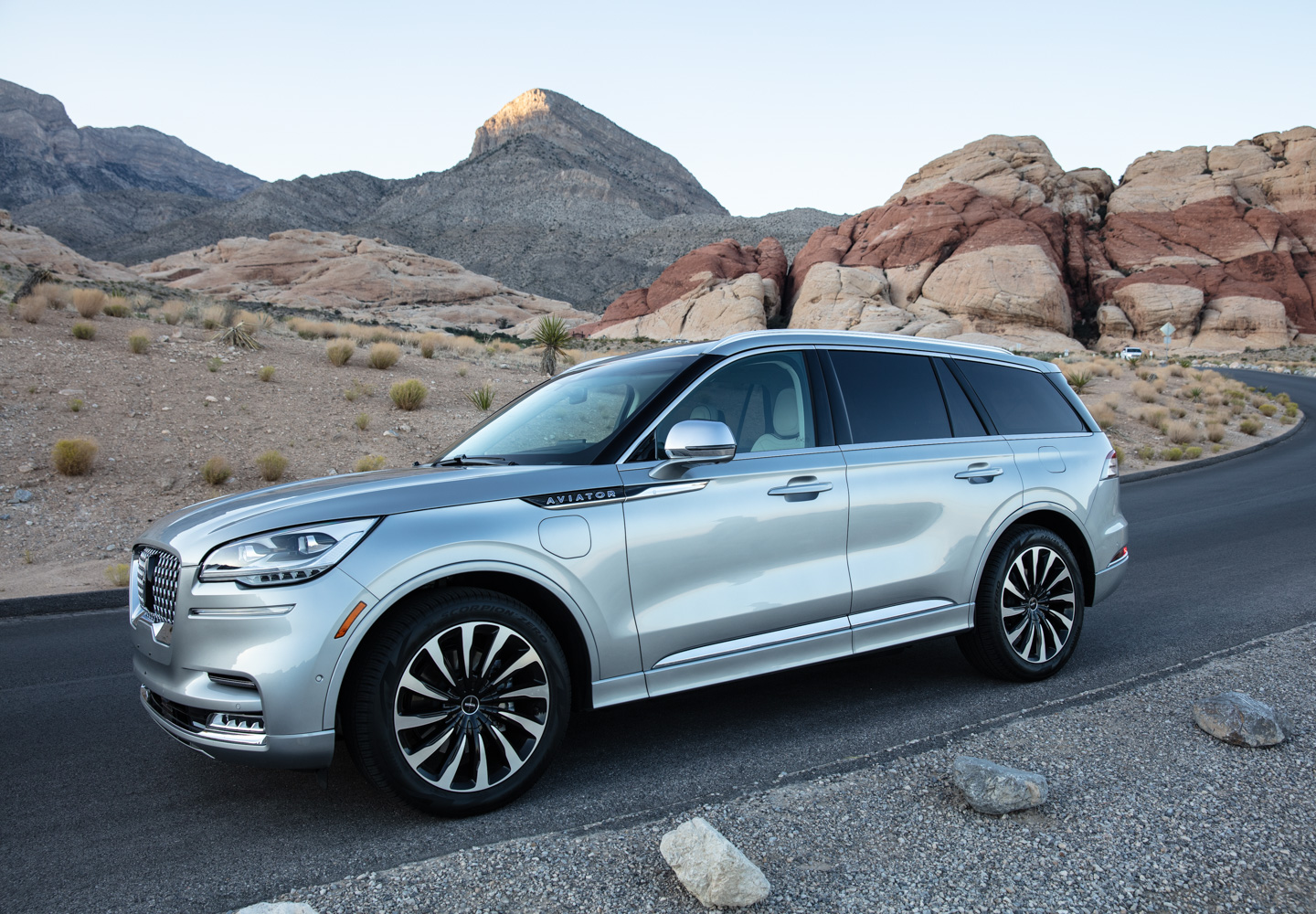
The more I drove the Aviator, the more I realized how much this car was like a Swiss Army knife. Lincoln is very much going for a vehicle that offers maximum driving and utility options for a higher-end consumer that pushes their vehicles for more than just grocery runs. This isn’t merely a fancy-but-delicate car that is meant to be seen and heard (loud engines for example), but rather a sophisticated people mover that does its best to combine the best of today’s most modern automotive technology in an attractive package suitable for fashionistas for a next-gen driving experience.
While Lincoln still sells is, on average, more expensive but that uses an older platform Navigator SUV, the Aviator is a more modern and practical ride by most accords. It’s not an off-road vehicle, but it merrily does pretty much everything you want on road and excels at being a highly competent automotive appliance. Why do I use that term? Today’s modern cars utilize a series of electronics to mimic the experience of driving an analog car. The Lincoln Aviator is a mostly (or perhaps fully) drive-by-wire experience. Even the doors don’t have mechanical opening handles but rather push-buttons that allow you to open them. Traditionalists worry about this level of reliance on batteries and circuits, but as a modern driving appliance the things engineers are able to do with motors and servos is incredible.
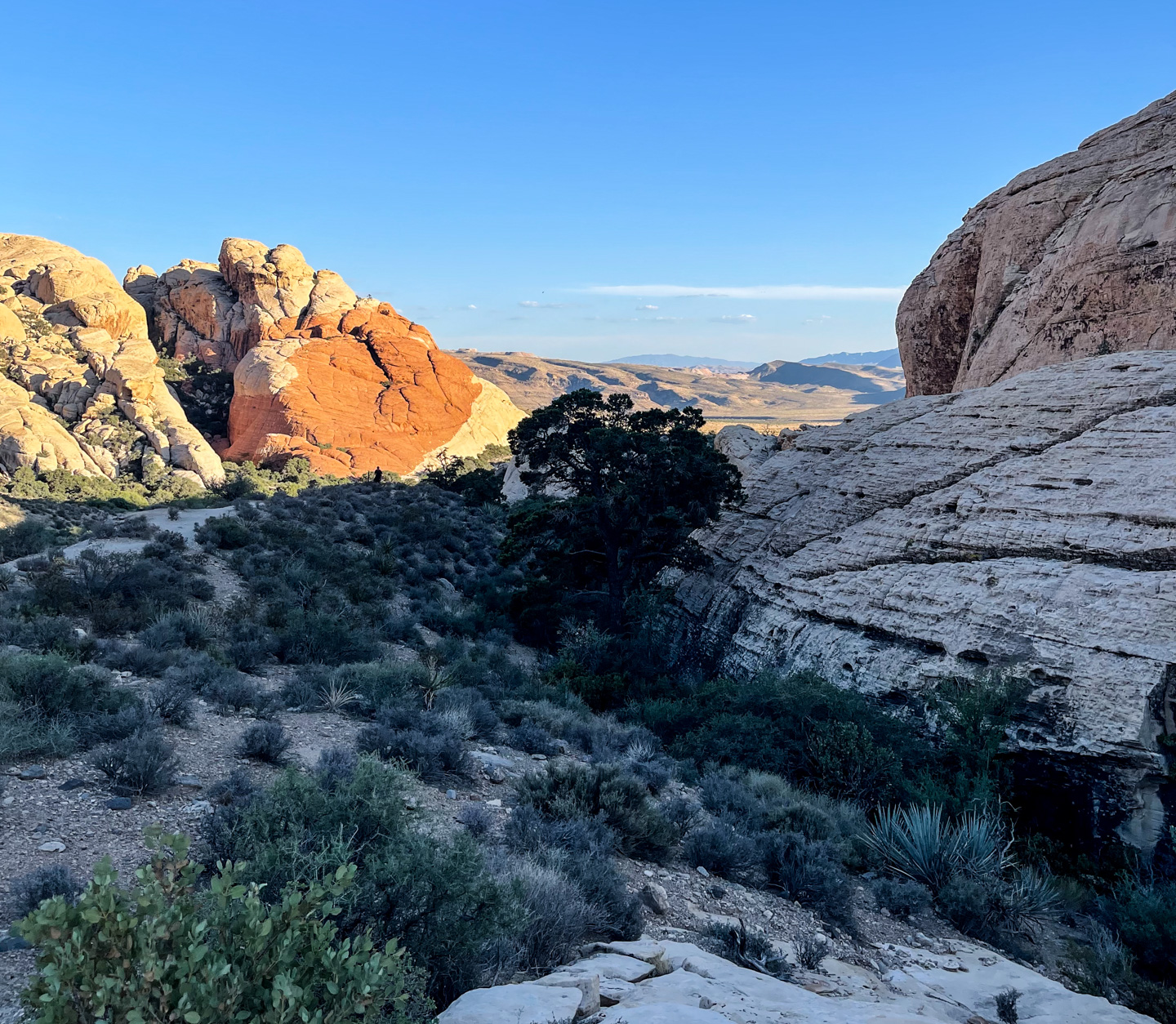
A good example is the Aviator’s suspension system, which offers an incredibly smooth ride, even at very high speeds, and is based not on shocks but on pumps and sensors. The Aviator isn’t a driver’s car in the way that German cars are which replicate an on-race track experience to your daily commute. Rather, Lincoln follows a very American legacy of comfort cars that excel at offering virtually fatigue-free experiences even if you are driving hundreds of miles at over 80 miles an hour. The quiet calm of the plush interior offers plenty of stretching and storage space as passengers relax even during heavy traffic or bumpy roads. Like American luxury cars of old, Lincoln has still figured out how to make a car interior feel like an inviting, mobile living room – even at high speeds.
Style-wise, the Aviator is probably the most beautiful modern Lincoln automobile that I can think of. The company combined some of its signature brand design elements with swoopy, sensual lines we typically see more regularly on Italian cars. Certainly, there are elements of existing cars in the overall look, but I think Lincoln did a fantastic job that resulted in an Aviator car that has people giving it a second glance and thinking to themselves, “Is that a Lincoln?” Interior cabin design is very good, overall, even if future refinements are possible. Indeed, this is still a fancy Ford, so there are some materials that aren’t as up to par as you’d find in, say, a top-end Audi. What Lincoln does excel at inside the cabin is feeling very airy, never cramped, while offering plenty of places to store little items and necessities.
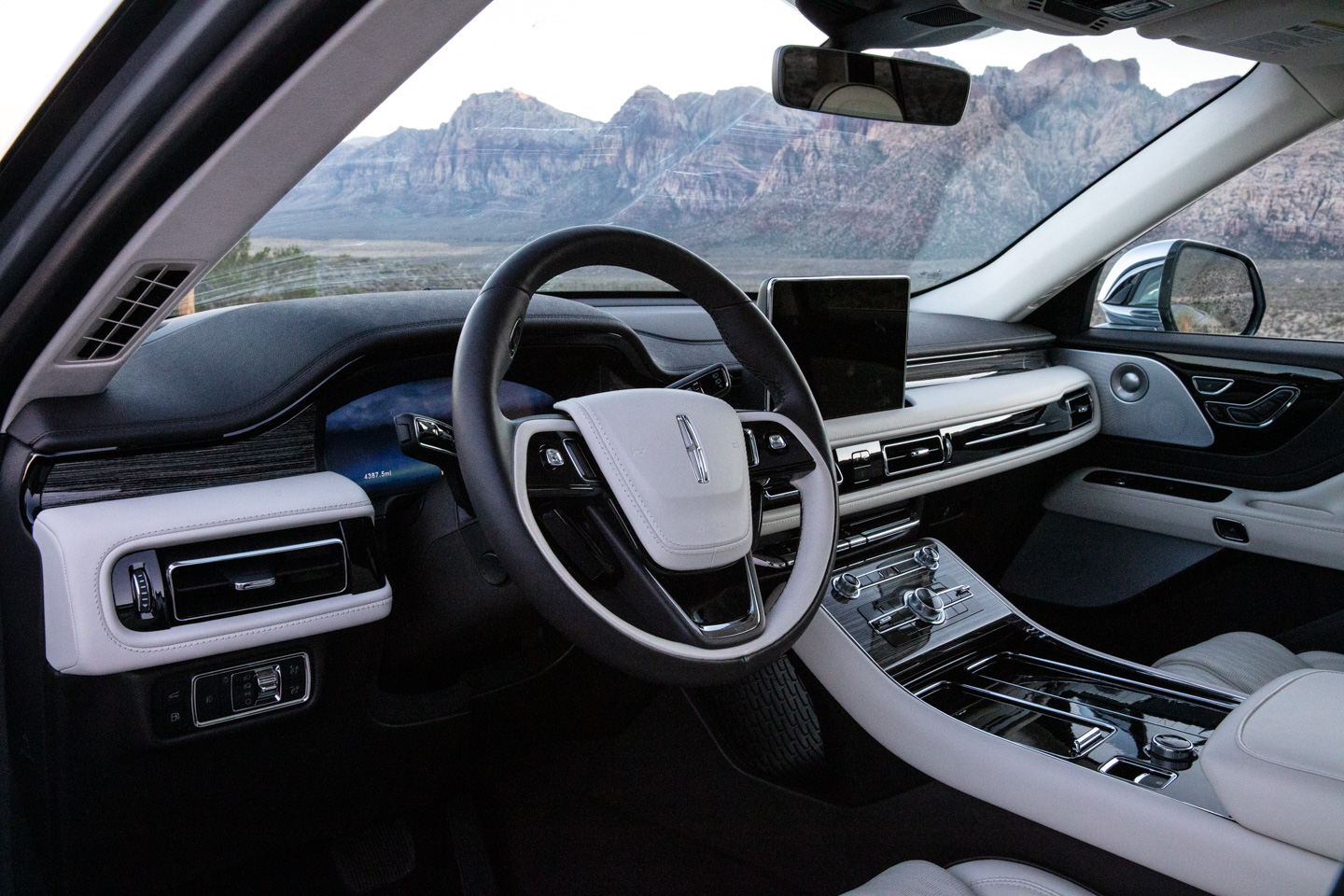
Consumers will expect to find loads of modern systems and features that make driving and living with the Aviator very useful. Though I kept joking that despite the name of the vehicle, there is no button that allows it to sprout wings and become airborne. More helpful systems include a heads-up display on the windshield, automated… well, everything (from lights to parking cameras, since this is a large car to otherwise maneuver), and the interesting interplay between gasoline and electric driving systems.
I have some thoughts as a consumer when it comes to electric vehicles and why I appreciate the hybrid approach (as opposed to the entirely gas-free) for now. Indeed, electric car motors are the power plants of the future as combustion engines have long since passed their nadir, if I correctly understand the limited nature of our oil reserves. That said, driving the Aviator for a few days has taught me an important lesson about electric vehicle support infrastructure. To make a long story short, getting gas is simple, widely available, and reliable. Getting electricity in your car is a gamble and hardly a pleasure if you have to rely on it to get around from anywhere outside of back to your home to recharge it.
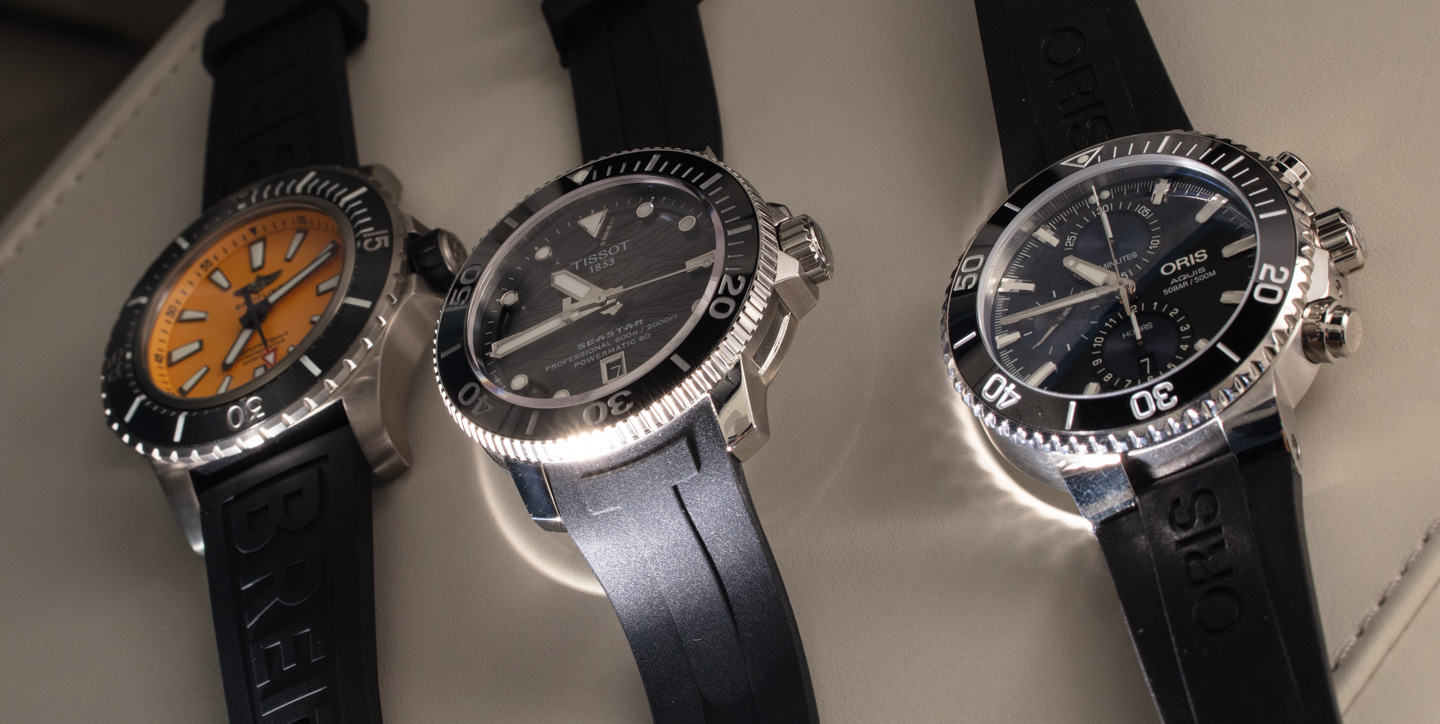
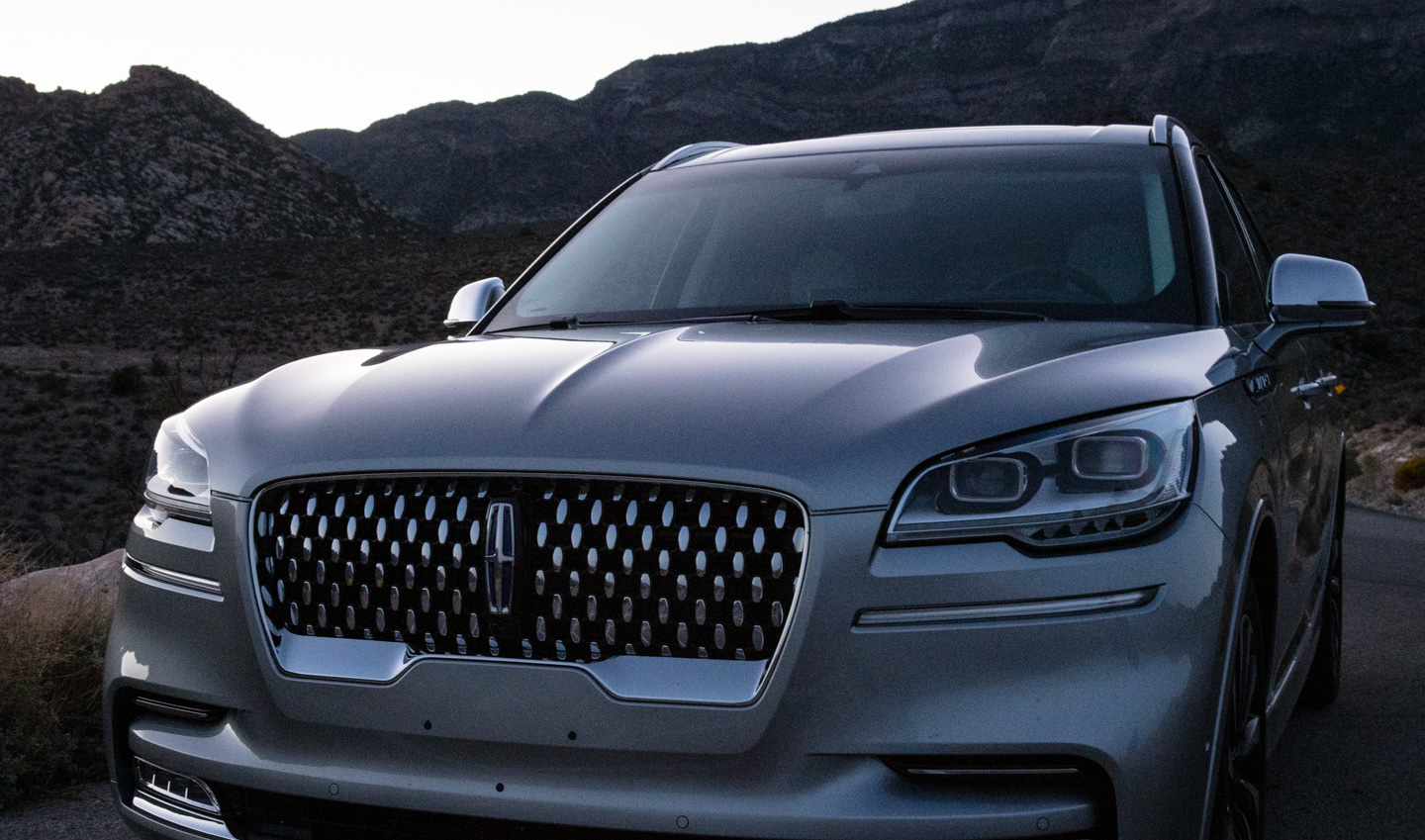
A good example is how often I found places that had no electric car charging ports, or worse yet, broken ones. Even car charging ports I found that ended up working were finicky and challenging to get working. The national park for example had no charging ports that I could find, which means you’d have to make your way there knowing you had enough battery to get home if you could only rely on electric power (solar power, someday?). Of course, there is the prospect of getting a charging port installed in your home, though this doesn’t help you while you are on the road at all. Electricity prices are hardly cheap in California, but I do imagine it still costs less than gasoline. I’m keen to explore the promise of all-electric cars for the masses in the future, but for now, it seems as though a hybrid gas/electric engine is the right approach. Price for the Lincoln Aviator Black Label Plug-In Hybrid automobile as equipped is just shy of $90,000 USD. You can learn more about the Lincoln Aviator via their website here.
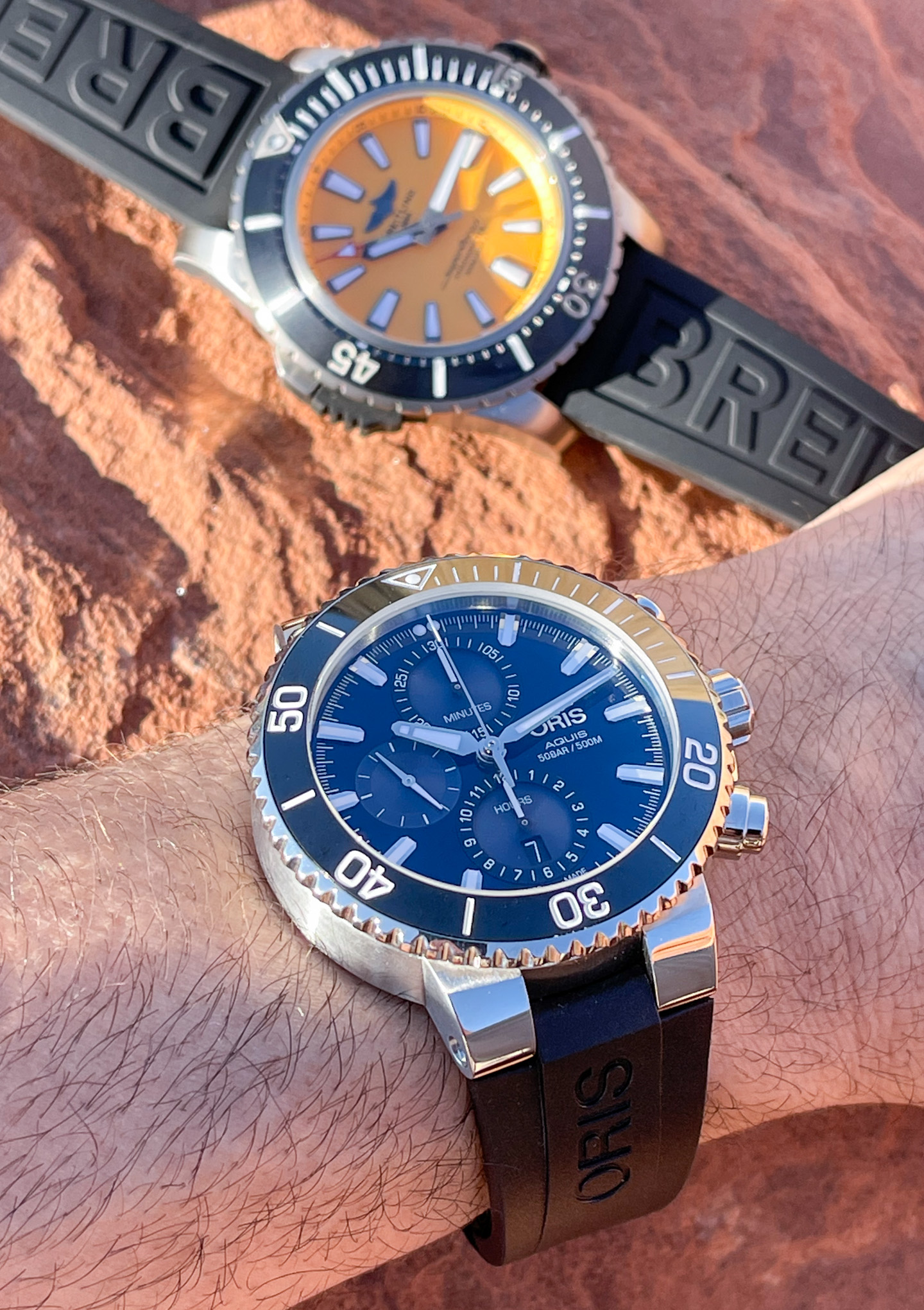
Dive Watches In The Desert
I decided to take three different dive watches from popular brands with me to the desert. These are all relatively recent watches with Swiss Made mechanical movements that are offered on rubber straps, and by theme are all diver’s style timepieces. The prices range from under $1,000 to over $5,000. Two of the watches are in steel while one of them is in titanium. I wanted to make sure these were all natural metal cases without top coatings on them (such as a black color application) because I wanted to see how these cases performed in the sun in terms of heat. While I haven’t tested this theory much, my guess is that black-colored watches might not perform as well in the desert given their tendency to absorb versus reflect light.
The goal of this article wasn’t to evaluate the watches in competition with one another, but rather to see how their various traits handle far-from-water environments like the desert as a category, overall. Each of these three watches is very capable in the desert, and I merely wanted to show off a few of them from different brands at different price points. If anything, I want to encourage watch brands to consider novel tool watch scenarios aside from the typical ocean diving and mountain climbing. Given the number of people who live near or travel to desert locales, why not more desert-themed sports watches? Especially those that don’t just mimic sand colors, but that are engineered to be worn as tools in the desert.
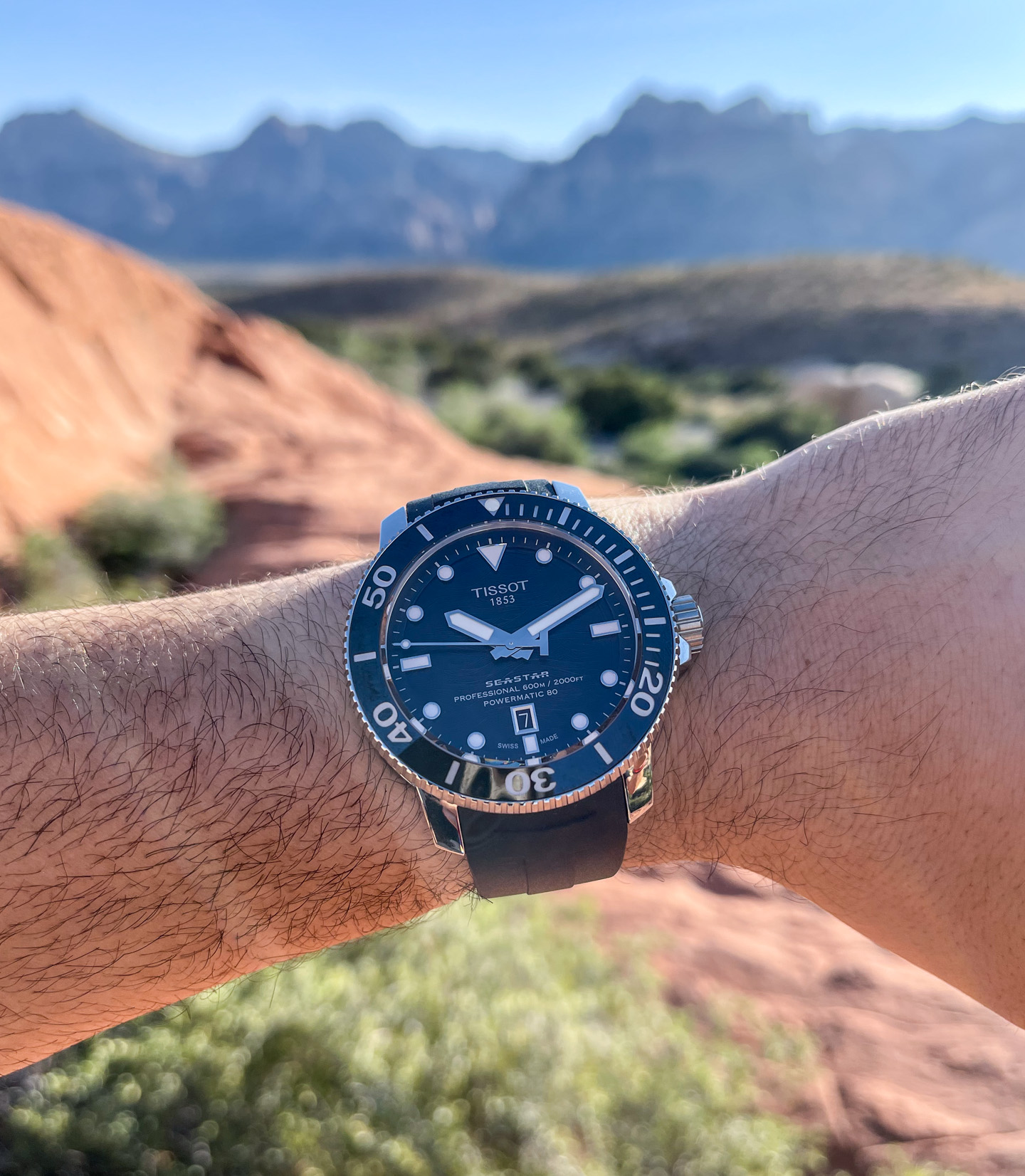
The most entry-level product of the mix is the still very fresh Tissot Seastar 2000 Professional Powermatic 80 watch. Rated down to 600 meters and with arguably the boldest dial of the trio (and that says a lot given that it is going up against a 48mm-wide Breitling), the new-generation Seastar 2000 is a welcome addition to the brand that lacked an enthusiast-grade diver for a little while. In this form, the steel-cased watch is 45mm-wide and features a polished ceramic insert in the rotating diver’s bezel and a slightly textured dial meant to evoke waves. That same pattern might be interpreted as rock cracks and seemed oddly fitting for the landscape.
On the available synthetic rubber strap (a steel bracelet is also available), the Seastar 2000 Professional is snug on the wrist even though it has larger proportions. The Powermatic 80 movement has a long power reserve and reading the time is a cinch no matter the angle of view given how big the hands and hour markers are. In fact, this high contrast dial is good enough to make the reflectivity that occurs from the polished hands and hour markers only a minor issue. What direct sunlight has taught me is that in the desert you want something as close to a matte-finished dial as possible. So while polished hands and hours markers may work (such as on the Tissot), it is advisable to seek matte dials when possible.
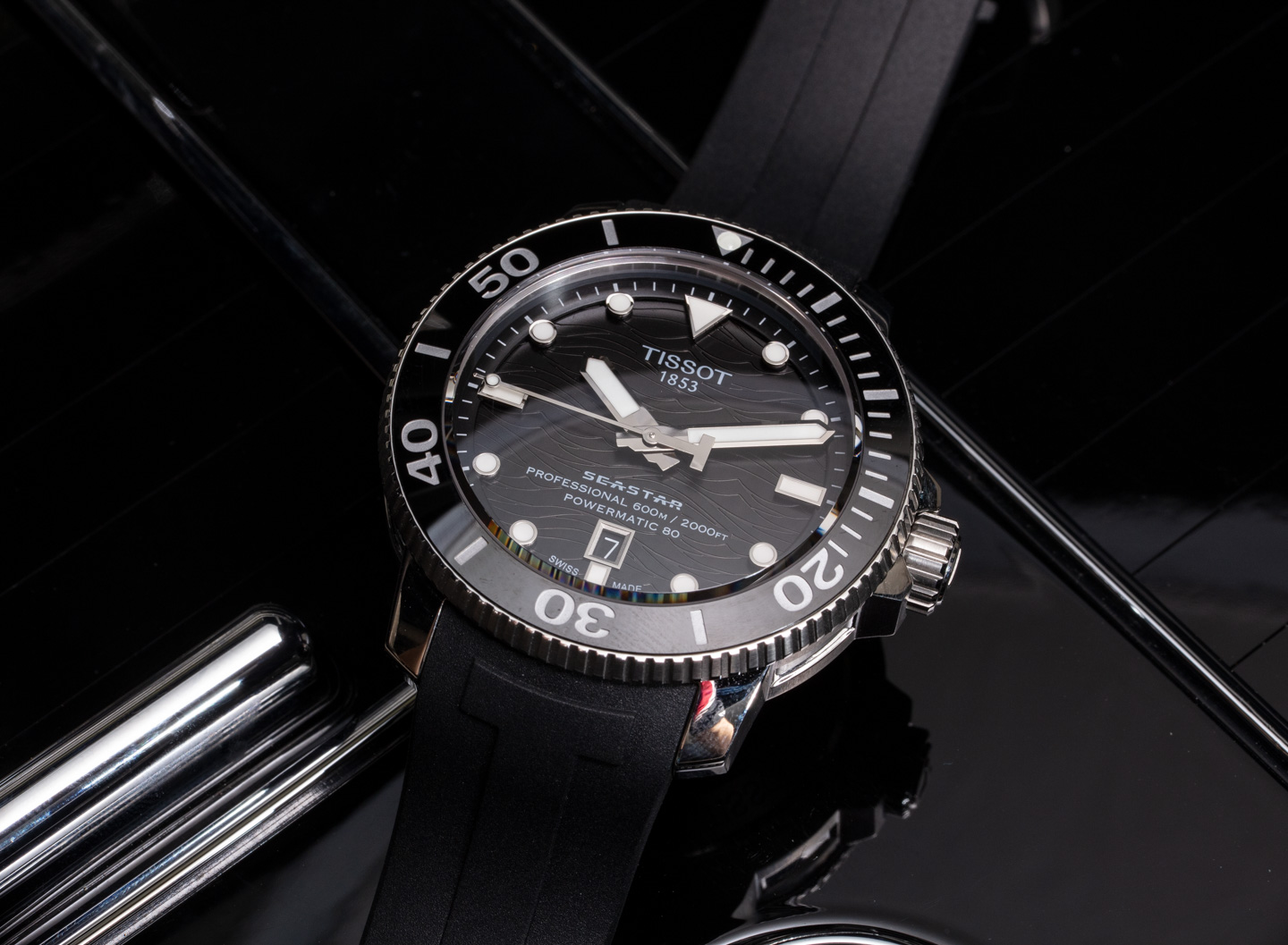
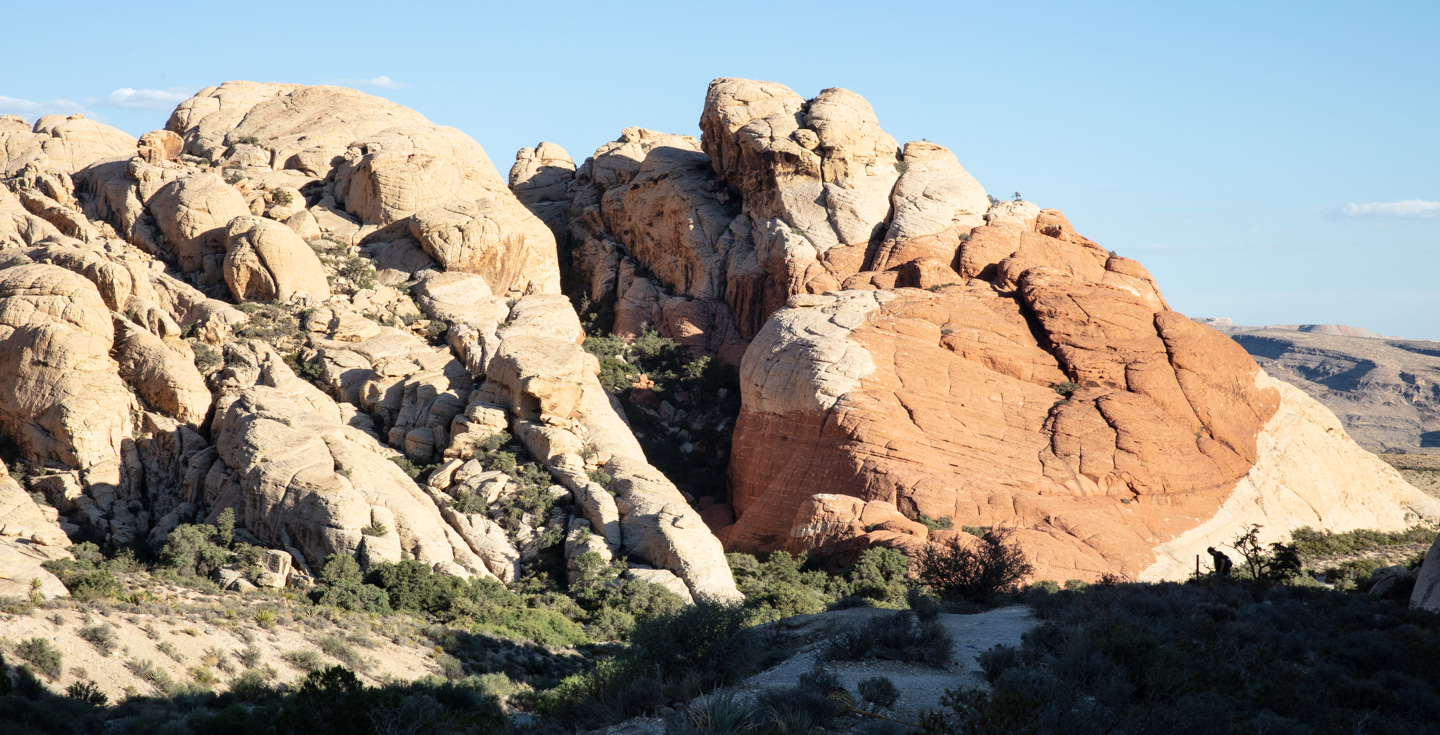
Tissot is going for a very international look with the Seastar 2000 Professional Powermatic 80 in that it is meant to be the brand’s all-purpose marine-themed sports watch right now. It doesn’t have any deep aesthetic connection with the desert, but given its good fit on the wrist and exceptionally clear dial, it fared more than competently in the desert. The black-color dial does work in the desert, but for these purposes, I’d also opt for a lighter dial color that Tissot also makes available. Price for this reference T120.607.17.441.00 Tissot Seastar 2000 Professional Powermatic 80 watch is $995 USD. Learn more at the Tissot website here.
Next on my wrist while at Red Rock Canyon National Park was the Oris Aquis Chronograph. It wears very similar in size to the Tissot given that it is also in steel and here sized at 45.5mm-wide. Unlike the other two watches, the Oris has a chronograph movement, which means that you can rely on it for additional timing measurements that can be useful. The irony with most diving chronograph watches is that the chronograph cannot often be used underwater. Using a chronograph in the desert makes a lot more sense. One good use of the chronograph is as a timer to help you know when to turn back to your camp, car, or whatever it is that you started from. If you decide you want to walk for four hours, then at the two-hour mark you know to turn back after starting the chronograph at the outset of your hike.
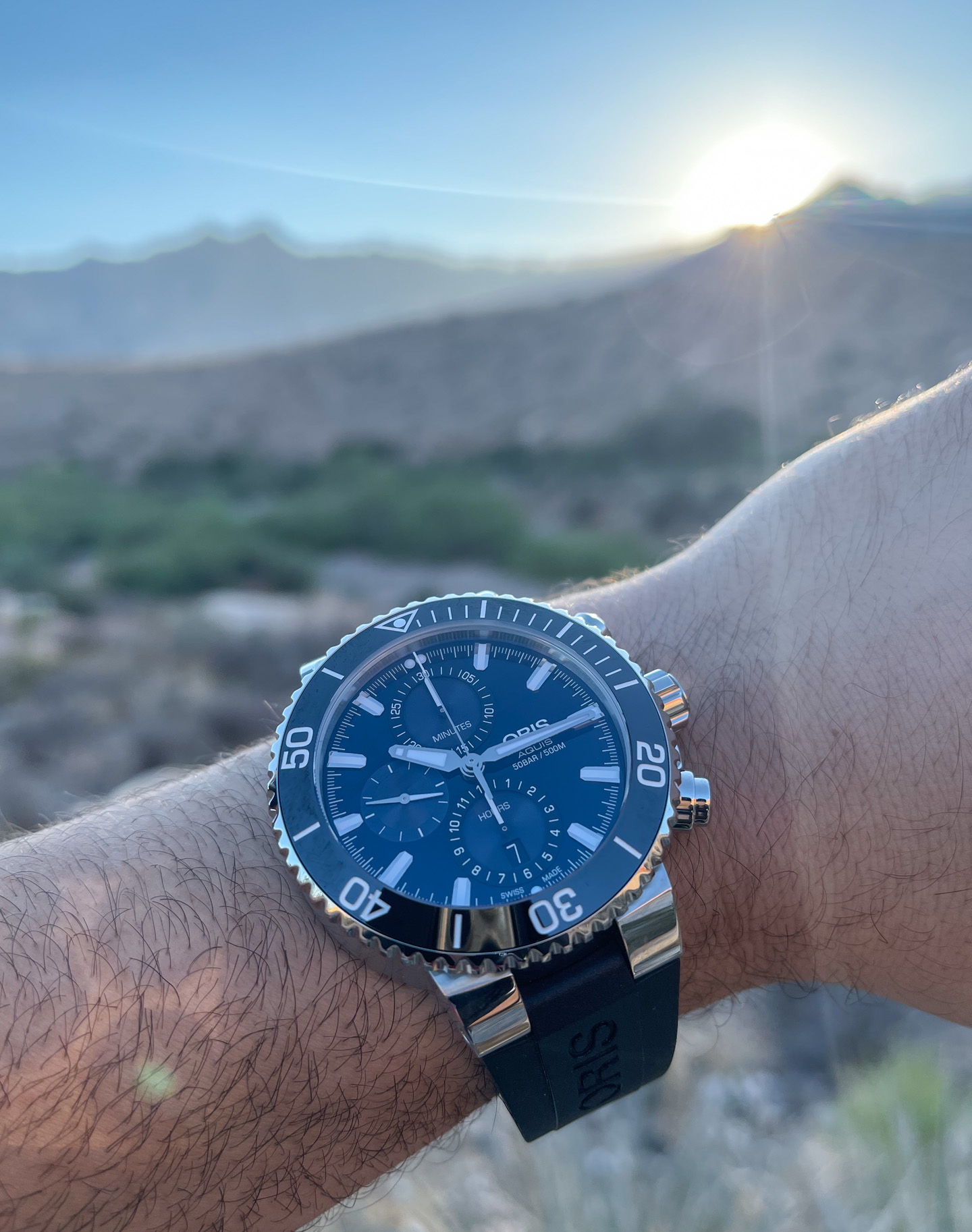
The Oris Aquis also has a polished black ceramic bezel insert but this time a deep blue metallic dial. It is so deep blue that it even looks black in the sunlight from various angles. Oris’ Aquis Chronograph is probably the most elegant of the three watches here. The mostly polished case and polished dial elements combined with all its swooping curves give the watch an almost seductive feel. Out of the three watches, this is the one I want to baby the most in the desert for fear that some errant rock will scratch its jewelry-like surfaces.
As a desert watch, however, the Oris Aquis Chronograph did rather well. I did have concern that it could heat up if placed in the sun for too long, and the shiny dial elements did reflect glare at times. Then again, like the Tissot, dial contrast between markers and the face is good enough that even direct sunlight didn’t hamper legibility. Inside the 500-meter water-resistant case is a Swiss Made Sellita SW500 automatic chronograph movement.
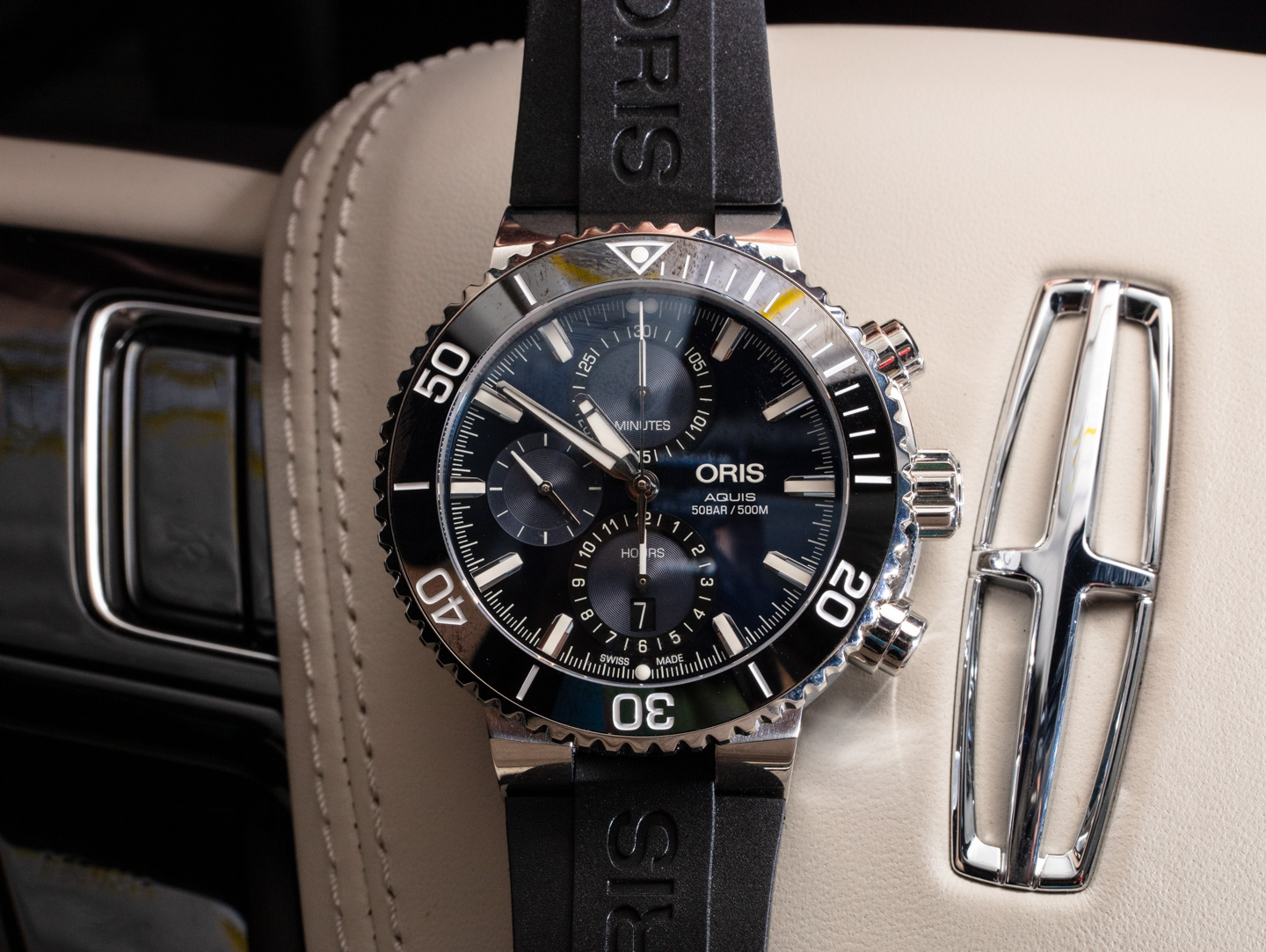
The Oris has the most complicated straps of the trio, with a rather long (but high quality) rubber strap that has a fold-over deployant clasp and diver’s extension. I had to wear the strap on the absolute smallest size for it to fit, and even though I knew it would flop around once it got sweaty enough. The Oris is a large timepiece and for it to be comfortable it needs to be worn very securely on the wrist. Personally, I prefer standard pin buckles, but there are those who prefer a more over-engineered solution. Provided your wrist is not as seemingly small as my own, the micro-adjust feature on the Oris Aquis Chronograph deployant could be nice when wanting to adjust the size if your wrist expands a bit during the day — then again, a pin buckle on the rubber strap would also do that just as well. Price for this reference 01 774 7743 4155-07 4 24 64EB Oris Aquis Chronograph is $3,700 USD. Learn more at the Oris watches website here.
Breitling’s largest diver’s watch right now is the Superocean 48, and the current generation is water-resistant to 300 meters in a 48mm-wide titanium case. This is the most expensive and expensive-feeling of the watches in the trio, even if it does not outperform any of them head-to-head as a diver’s watch. What about as a desert diver’s watch? I chose this yellow color dial of the Breitling Superocean 48 specifically to see how a lighter dial handles incoming sunlight.
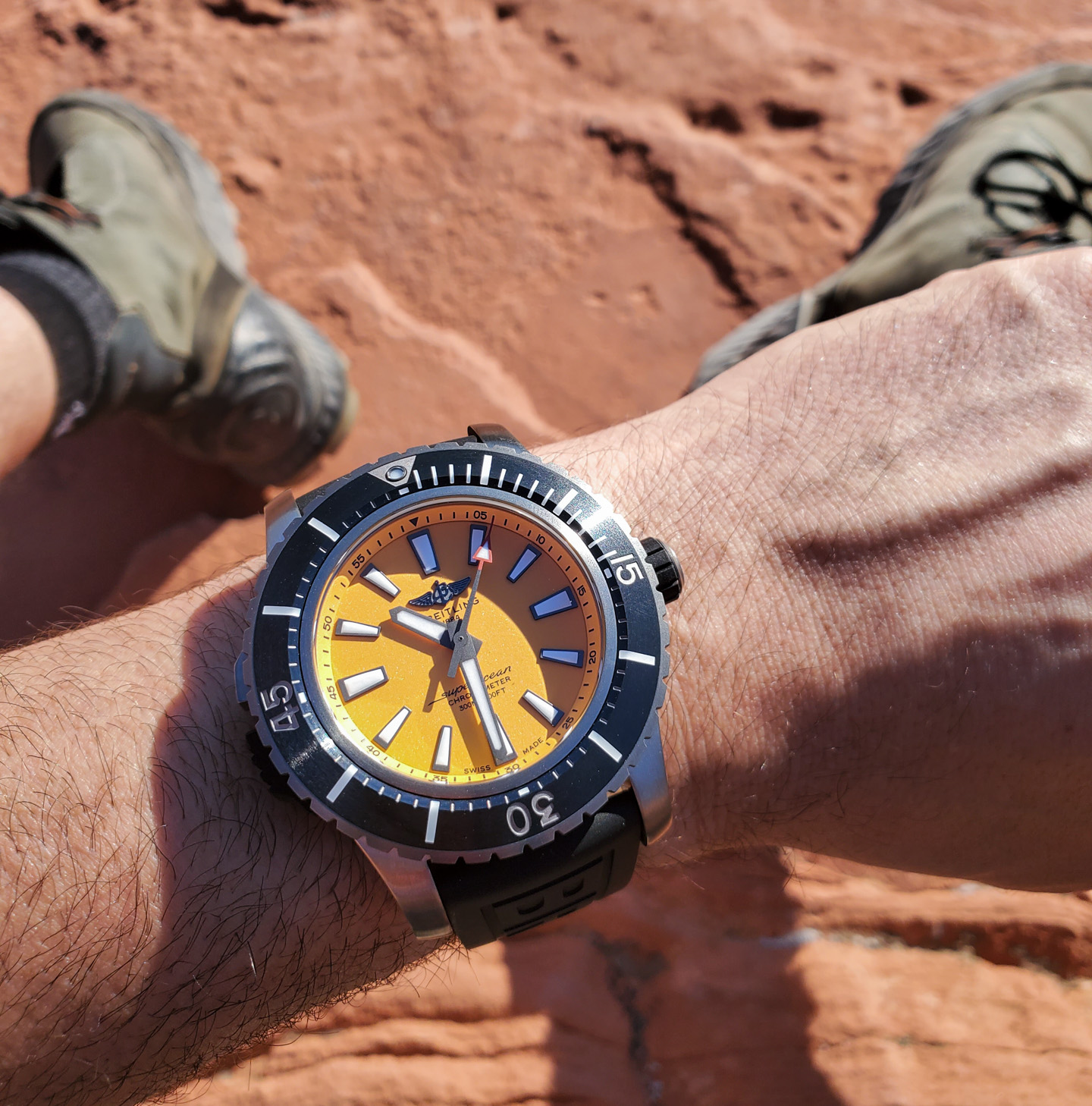
Even though this Superocean 48 has a light dial, it also has hands and hour markers that don’t contrast as much with the dial given that they are light gray and white (for the luminant). I was correct in expecting this almost entirely matte dial to perform the best in the sunlight. In truth, all of the dials were legible enough in the bright desert sun, but if you wanted a functional winner, then the all-matte hour markers, hands, and face of the Breitling Superocean 48 would be the top option to go with.
The titanium case helps the bulky structure from being too top-heavy on the wrist. It also has a ceramic bezel insert, but one that has a more brushed finishing and a complex shape that feels more high-end. Breitling currently makes a dizzying assortment of Superocean watches and this model is currently the largest. It is also the only Superocean with a bi-directional rotating bezel that has a locking feature (the little switch on the left side of the Superocean 48’s 17.2mm-thick case).
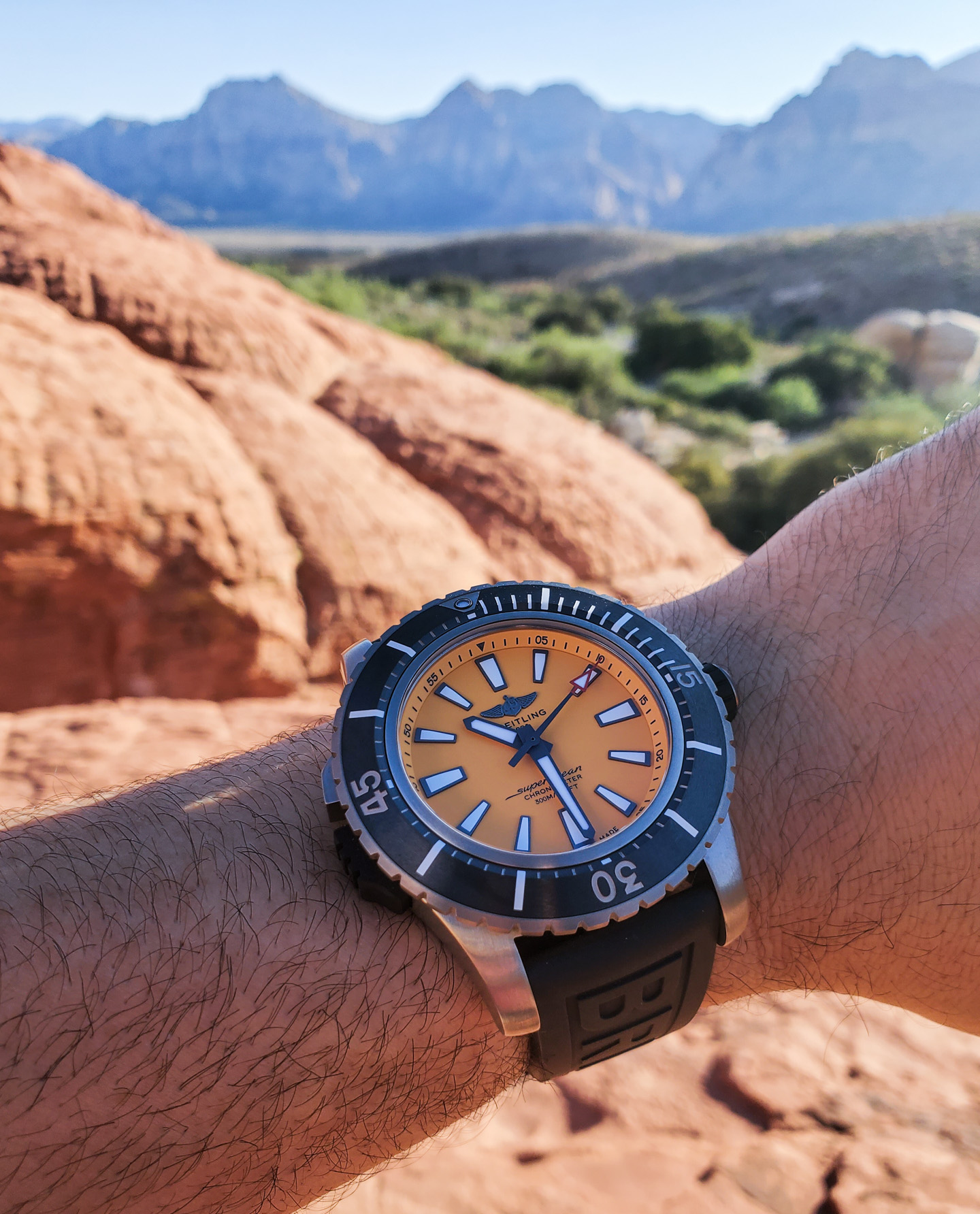
I found the titanium case to be among the more comfortable options in the desert given its 140-gram weight as well as the fact that it didn’t seem to get as hot as the steel watch cases. Titanium will scratch more easily if scraped up against a rock or gravel, but if you worry about wrist weight fatigue then it is the metal to go with. Inside the Superocean 48 is a Swiss Made ETA COSC Chronometer certified automatic movement that powers the elegantly simple time-only dial. Attached to the case is a natural rubber strap – which with the simple pin buckle I found to be the most comfortable and desert-suitable out of the three I wore (but only as a superlative given that all the straps performed well). Price for the reference E17369241I1S1 Breitling Superocean Automatic 48 is $5,400 USD. Learn more at the Breitling watches website here.
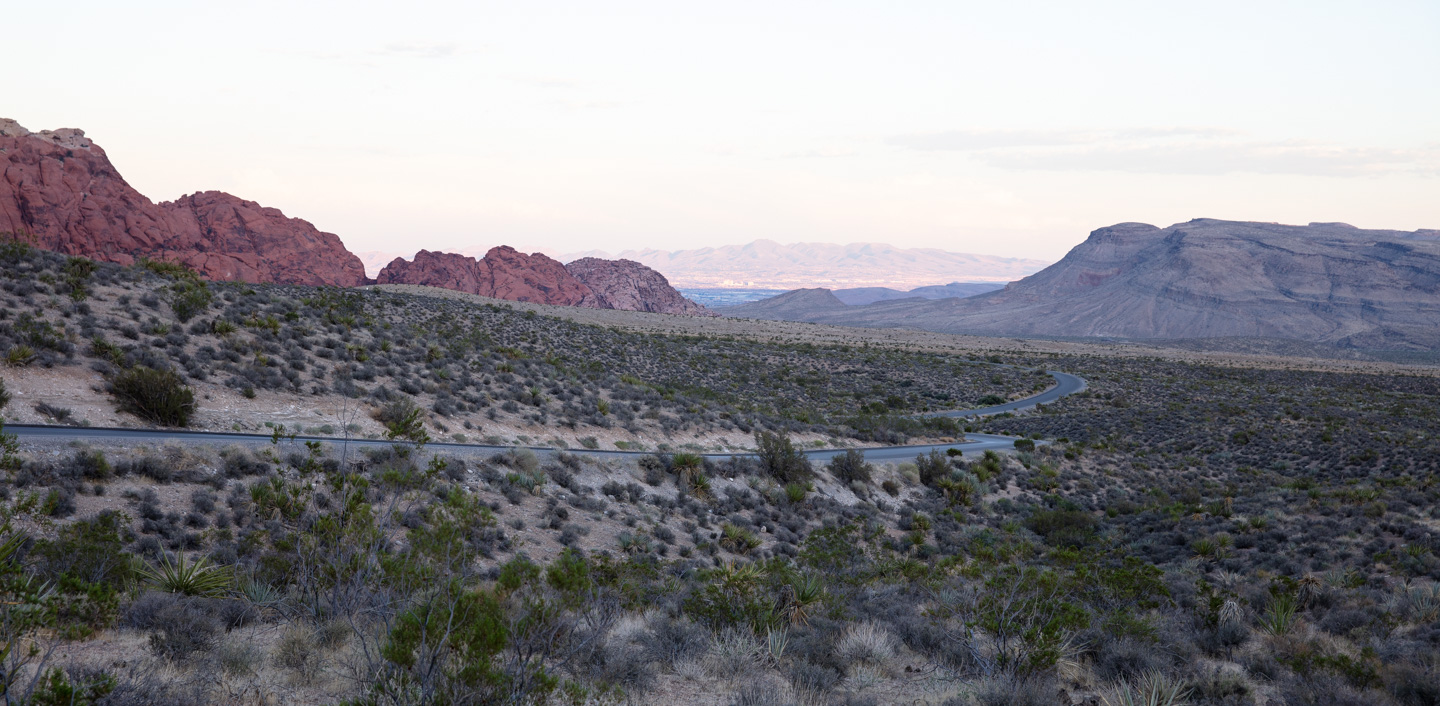
Final Warm Weather Watch Thoughts
What is now clear to me is that dive watches are also very capable in the desert. Many of the same traits that help timepieces survive the depths are also useful in scenarios such as the hot desert. At the least, dive watches as a utility item are just as durable in the desert as they are while underwater. The key for desert-heat wearing appears to be the strap, which should hold a watch snugly to your wrist even while sweating (but also allow for moisture to escape so that unwanted smells do not develop).
Even though other sport-style watches could brave 120-degree weather just fine, at the least we know dive watches on the correct strap can be relied upon. Those who need absolute legibility should seek dials with the least polished or reflective elements possible. In some circumstances, watches placed in direct sunlight for a long time can become damaged or merely dangerous to the touch.
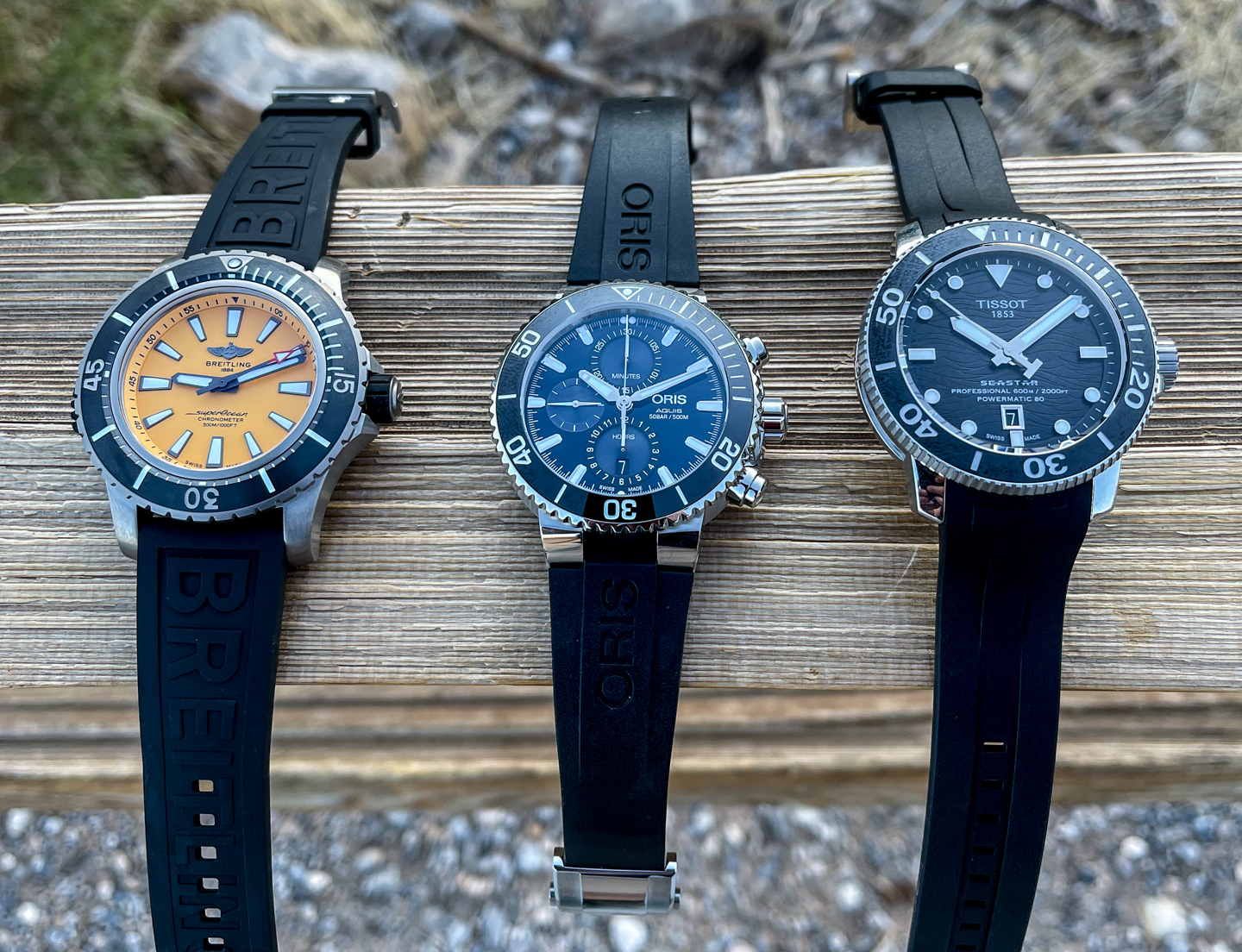
There aren’t too many timepiece products currently aimed at desert activity or survival. In my opinion, there is a world of opportunity in materials, colors, and material surface finishes to create more optimized desert sports watches. These would appeal to large parts of the world such as the American Southwest to West Coast, Southern Europe, South Africa, Australia, and even parts of China where desert climates are where many people live reside (including myself). I bet more people would find relevance in a desert sport watch-wearing experience than those who care about driving and boating watches combined. For now the usual suspects in the watch industry all have dive watches that can be mostly found on rubber straps which will likely serve you well as your wristwatch for the desert. Thanks again to Tissot, Oris, Breitling, and also automobile maker Lincoln.




